Imagine visiting lovely cities — small and large — along the fabled Rhine River and Danube River. You can certainly visit these cities on your own and enjoy them. We’ve discovered that river cruising gives you this, but with valuable perks. The Viking Grand European Tour river cruise takes you to all the key towns along the Rhine, Main, and Danube rivers. Each evening you enjoy the company of others, dine on destination-inspired meals, are lulled to sleep in “your own bed,” and wake up refreshed to start another great day of exploring. You have pre-planned tours of towns you visit — or explore on your own — and then return to your floating hotel, lounge, and restaurant.
Check out my Complete Guide to a Viking River Cruise article to learn more about the overall experience onboard.
My husband, Pop, and I usually design our vacations to Europe, and we like talking about and planning what we want to see and where we want to stay beforehand. However, we heard more and more from friends about how much they enjoy European river cruises. So we decided to leave our comfort zone and find out more. We’re glad we did.
River cruising allows travelers to visit many great places while only having to unpack once. (Sounds good, right?) Essentially, you’re staying in a floating full-service hotel with amenities and planned excursions. We chose Viking River Cruises because of its stellar reputation and its 15-day Grand European Tour that began in Amsterdam, traveled down the Rhine, Main, and Danube rivers, and concluded in Budapest. You could, of course, choose to begin in Budapest and end in Amsterdam. It’s the same journey in reverse. Viking continues to add boats and ports of call, so there are plenty of options depending on your geographic and sightseeing interests.
Disclaimer: My husband, Pop, and I paid for the Viking Grand European Tour. We did not receive compensation or discounts from Viking or any other organization. I merely want to share our experience on this river cruise with my readers.
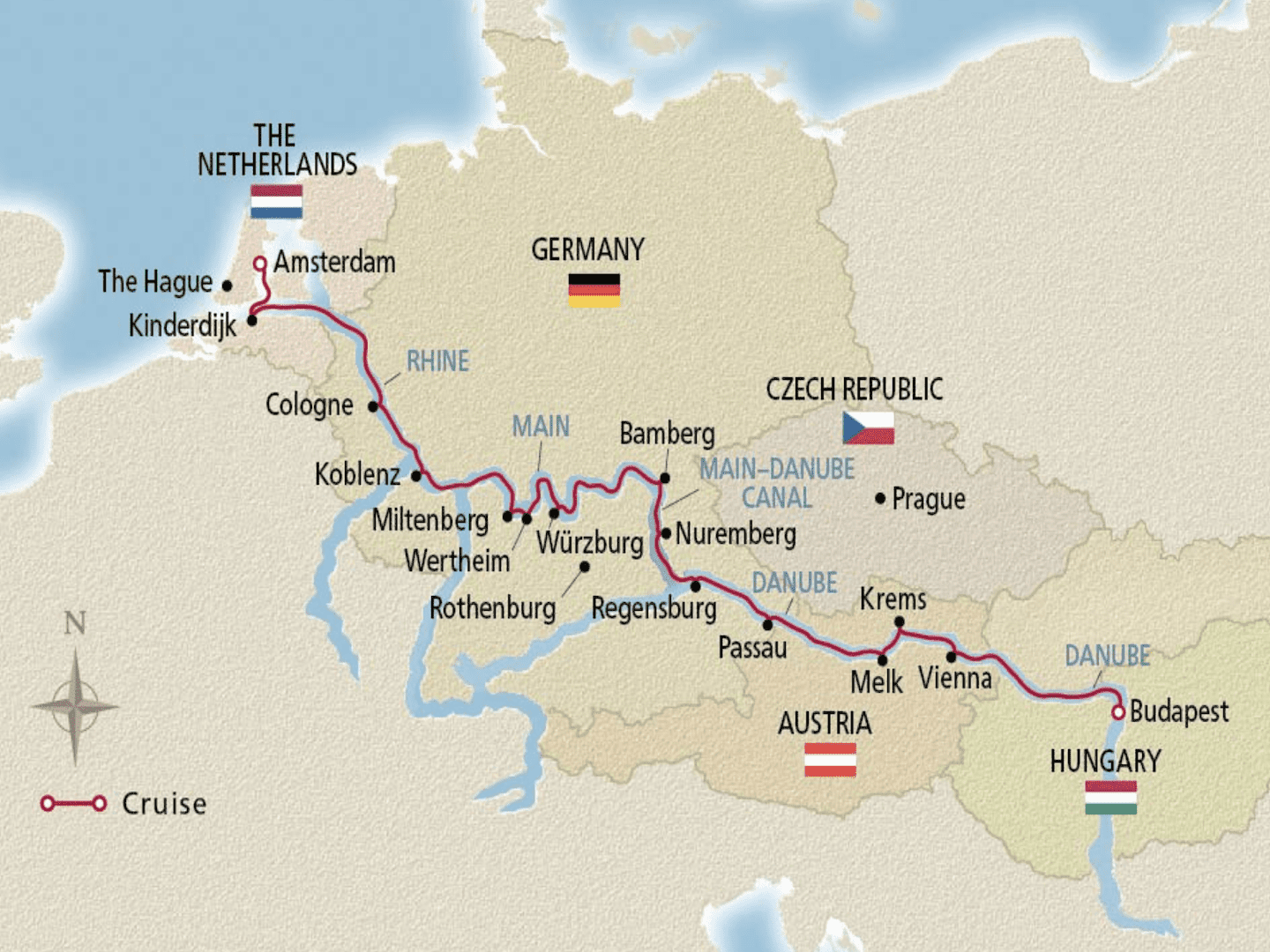
The following are our favorite visits to the major ports of call on Viking’s Grand European Tour river cruise.
AMSTERDAM, The Netherlands
Our Viking Grand European Tour river cruise began in Amsterdam. When we arrived at the ship, we dropped our luggage and explored the city a bit. We had already visited the Rijksmuseum, the Van Gogh Museum, and the Anne Frank House on a previous trip. They were all outstanding, and we highly recommend visiting them. We decided to take a canal boat cruise for this short visit and walk the town more.
Whether by canal boat or on foot, you’ll notice the relatively narrow homes along the canals. In years past, the maximum width of homes was 18 feet, so people built up multiple floors. Because of the height of the homes and the resulting narrowness of the staircases within, the homes have hoisting beams along with pulleys and ropes on the front gables to lift furniture and goods to the upper floors.
If you have time in your schedule, you may want to arrive a few days early so you have the time to explore the area a bit. There is a lot to see. When we visited a few years ago, we stayed in Haarlem, a 20-minute train ride from Amsterdam. You may have heard that Amsterdam is now considered overrun with tourists. It’s true. It’s crowded. That’s why we liked to return to the peaceful, friendly little town of Haarlem at the end of a busy sightseeing day.
KINDERDIJK, The Netherlands
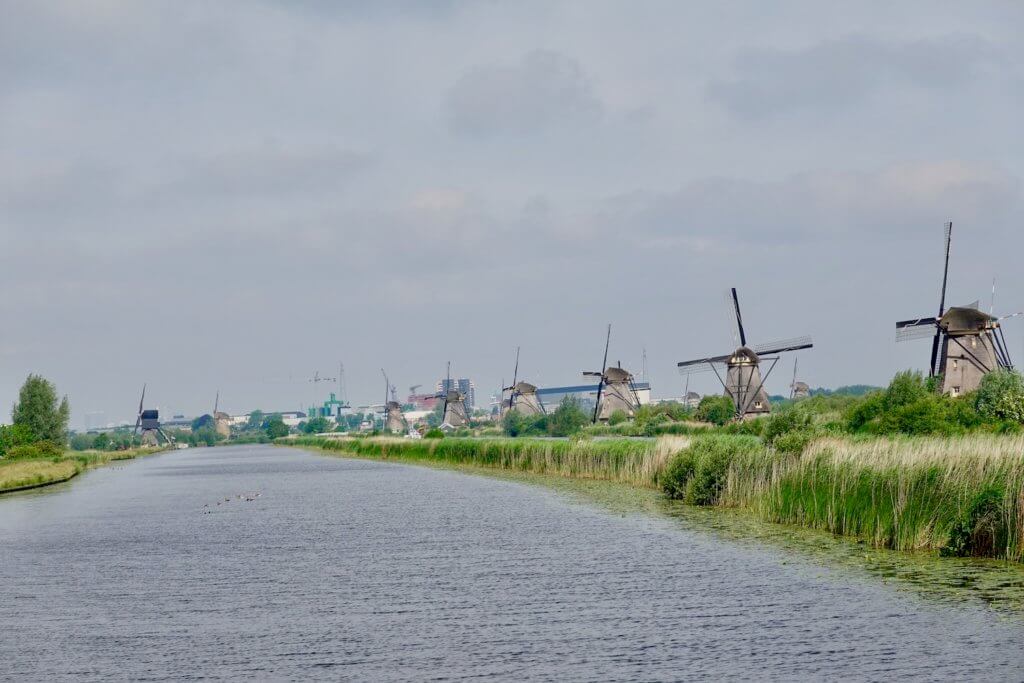
This village’s name is derived from a long-told story about a flood hundreds of years ago when the water swept away belongings and a child in a cradle. As the tale is told, a cat perched on the cradle, balancing it as it floated away. Thus, the name Kinderdijk “children’s dike,” was born. Today some residents have a cradle (made of willows and reeds) in their back gardens as an homage to the village’s history.
You’ll see lots of windmills here. They’ve long served an important purpose by helping regulate water flow into and out of the river, depending on the water levels behind the dikes. Windmills are still in operation today and are homes for the families of the windmill operators.
We biked along a path by the windmills and stopped at a museum (Museum Windmill Blokweer) showing how a typical family lived there in the 1950s. Tragedy struck at this one when the son of the owner walked out the wrong door and was killed by the windmill’s blade. (There are two doors on a windmill, so there’s always a way out that is not on the side where the blade turns.) When people come to visit someone who is living in a windmill, they look up to make sure the brake for the blade is on, which indicates that the blade is not moving.
Whether taking the tour on foot or by bike (we highly recommend this easy biking tour), you’ll gain a keen understanding of the importance of windmills to Dutch life.
COLOGNE, Germany
Our Viking river cruise ship docked within a few minutes walk into the center of Cologne (or Köln in German), the fourth largest German city. Because it’s so walkable, you’ll be able to cover several of the top spots and have time to spare for a meal and/or shopping before you need to board the ship for departure.
Places of Interest
- Cologne Cathedral – When you approach the Gothic Cologne Cathedral, you are greeted with a dark facade. (This is due to the fumes from steam trains as the train terminal is adjacent to the cathedral.) The facade was built with sandstone — a material easy to transport centuries ago — that kind of soaks up the dirty fumes; this makes cleaning it a chore since sandstone is too fragile to power wash. But once you walk into the Cologne Cathedral, you see the beauty of the architecture and the artwork. And you feel small … so small, and that, of course, is by design. You are to look upward and feel the power of God. There are towering walls with detailed stained glass windows all around you. This cathedral houses the bodies of the three magi, the three wise men, and holds special significance to Christians. It is a sight to see and ponder the labor and craftsmanship that went into building it. The Cologne Cathedral was the tallest building in the world before the Washington Monument and the Eiffel Tower eclipsed it. Gustave Eiffel gained some of his practical structural engineering inspiration from a visit to the Cologne Cathedral. Guided tours in English are available, as are tickets to climb up to the tower.
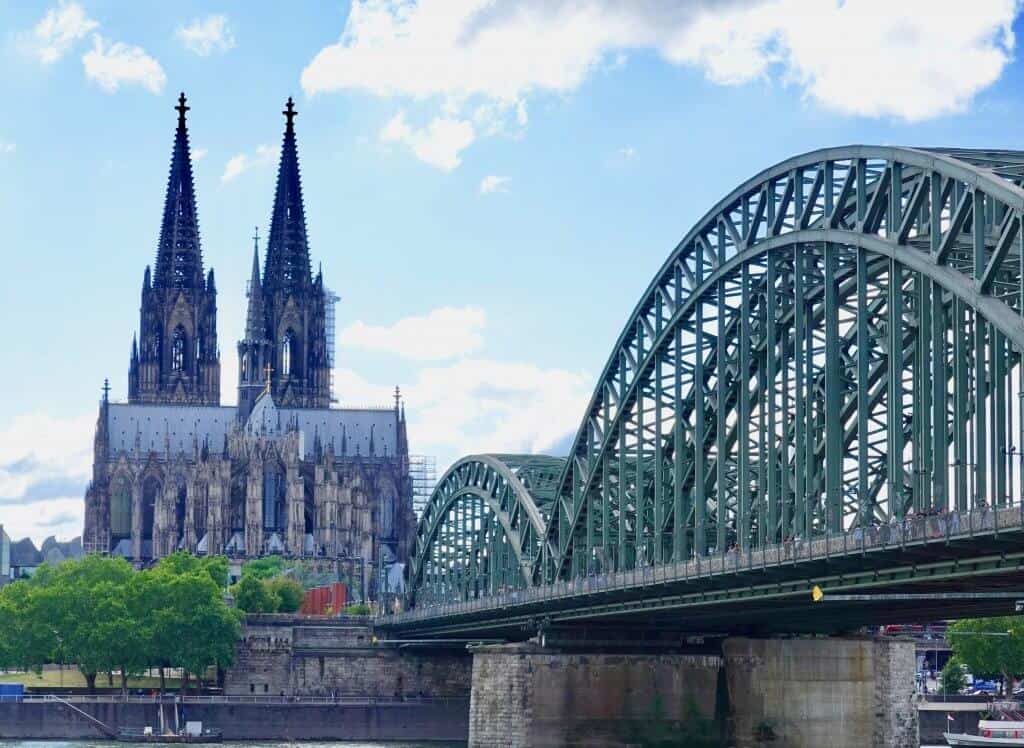

- Top of Cologne Excursion – If you get the chance while on a Viking river cruise, take the Top of Cologne optional excursion. Your group will accompany an art historian in the construction elevator that whisks you up to the workrooms where restoration work is always occurring. The workrooms are situated between the ceiling you see from inside the cathedral and the actual roof of the building. Up here you’ll see what goes into maintaining the cathedral (inside and out) including models of the gargoyles (for use in future restoration work). You can step out on narrow walkways, peer over city rooftops, and down into the streets below. One highlight was stepping out in the belfry for a spectacular 360-degree view. Sadly, we were asked not to share pictures of this excursion online. You’ll just have to go for yourselves. It’s a must-see! By the way, I’m a little afraid of heights, so I positioned myself on the inside of the elevator so I couldn’t easily see outside as it was lifting us up, and I really enjoy this visit.
- Cologne Beer Houses – Cologne has its special version of beer called Kölsch. It’s a pale ale — cold, crisp, and clear- served in small, thin 7-ounce glasses. No beer steins in this part of Germany! When you order a beer in a Brauhaus (beer house where Kölsch is brewed) or other taverns, the waiter will replace your empty glass with another one. This will continue until you put a coaster on top of the glass signaling, “No more! I’ve reached my limit!” The beer houses are places designed for socialization — European style. Instead of big screen TVs like in the U.S., you’ll find customers enjoying conversations with their friends, welcoming others to the tables, and lots of positive vibes.
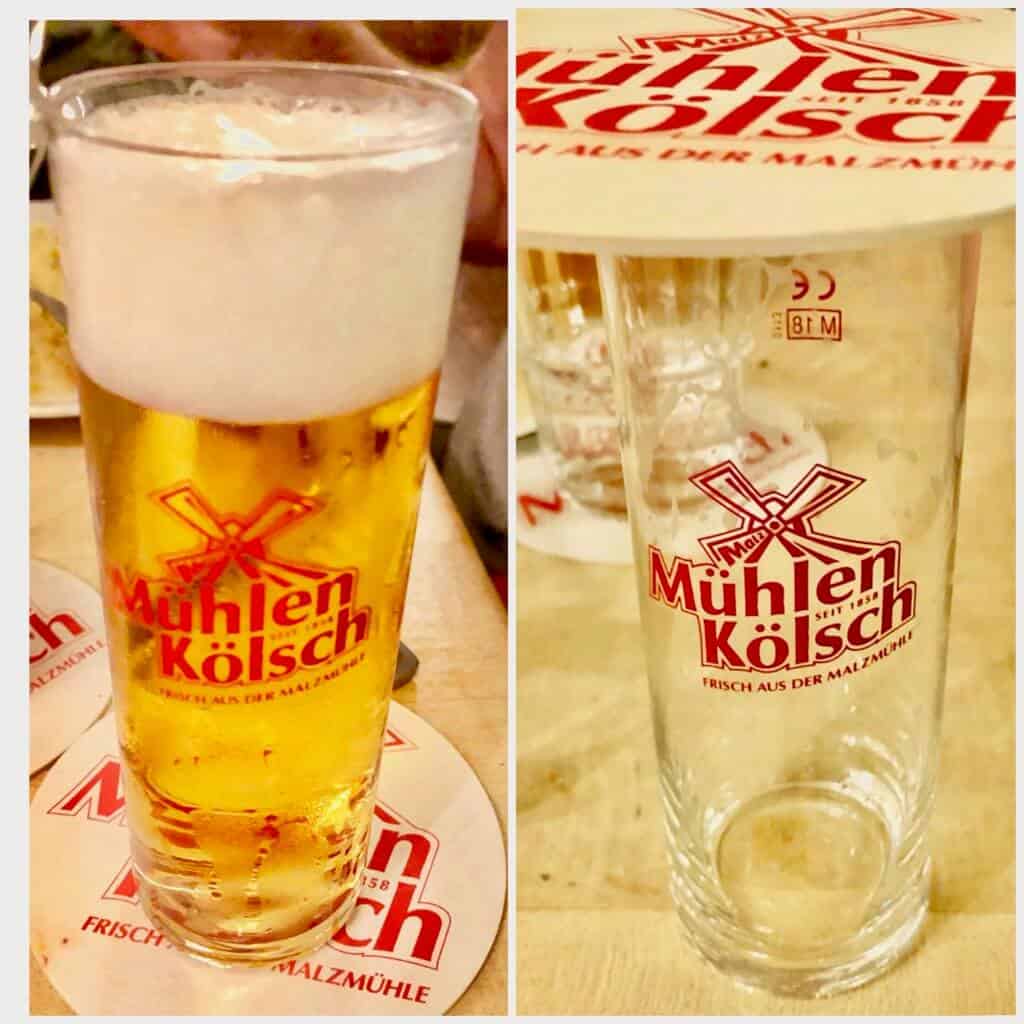
MARKSBURG CASTLE, Braubach, Germany
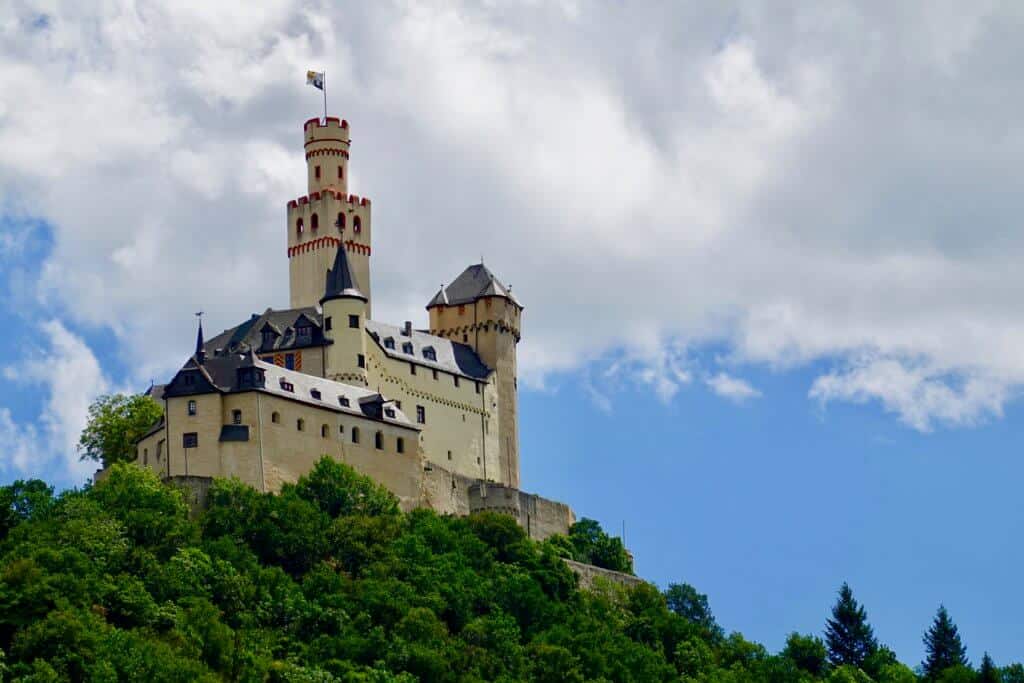
An excursion on our Viking Grand European Tour river cruise, the Marksburg Castle is a UNESCO World Heritage Site. Dating from the 12th century and expanded over the centuries, the Marksburg Castle suffered minimal damage during World War II when so many other structures were destroyed. The fact that it survived the war relatively unscathed makes it a place that stands pretty much true to its original design. Situated high atop a hill on the Rhine River not far from Koblenz, the castle served as a home for powerful nobles, a refuge for the citizens of the town Braubach, and a point to control the customs levied on boats traveling on this part of the Rhine River.
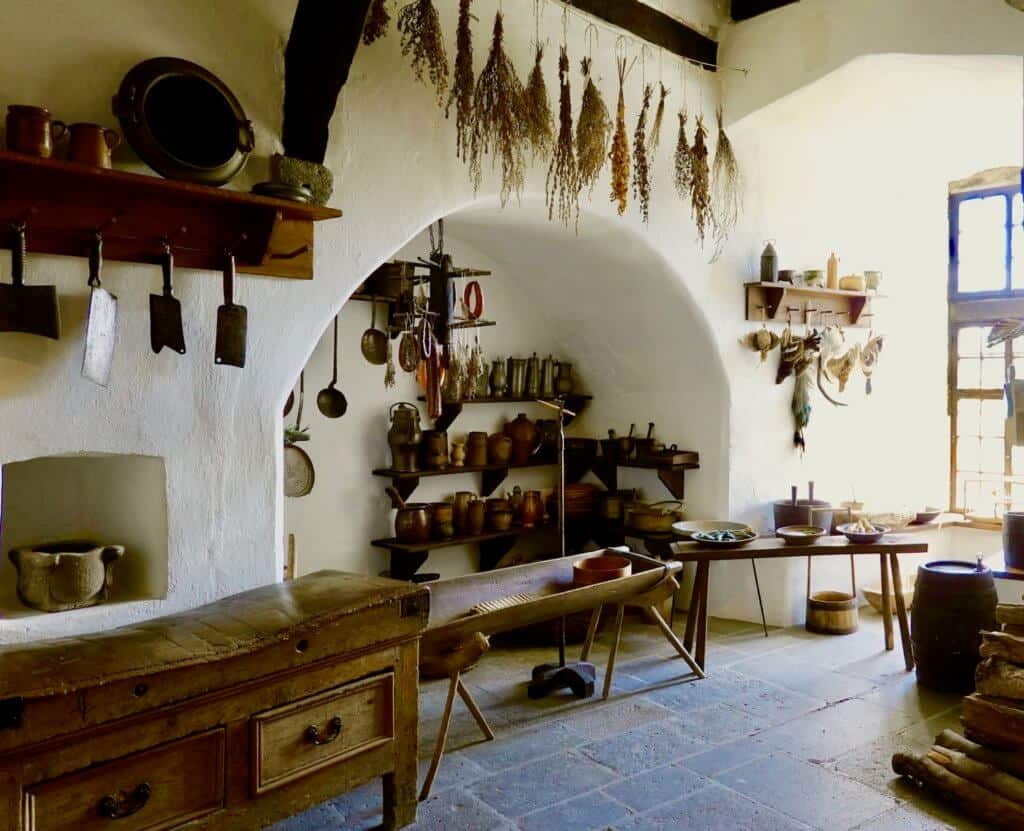


As you walk through the castle (wear good walking/hiking shoes as the terrain is uneven in spots), you can picture yourself back in time because it’s well-preserved. There’s furniture in some rooms and the kitchen is staged to help you visualize castle life centuries ago. The well-narrated tour explains how each room was used and what life was like for the castle’s inhabitants. There’s even a display of armor on mannequins to show the progression of defensive wear soldiers wore through the ages. And, last but not least, there’s a torture chamber that will bring home the point that punishments were harsh. Due to the high strategic position of this castle, its canons were never fired in anger.
CASTLES OF THE MIDDLE RHINE, Germany
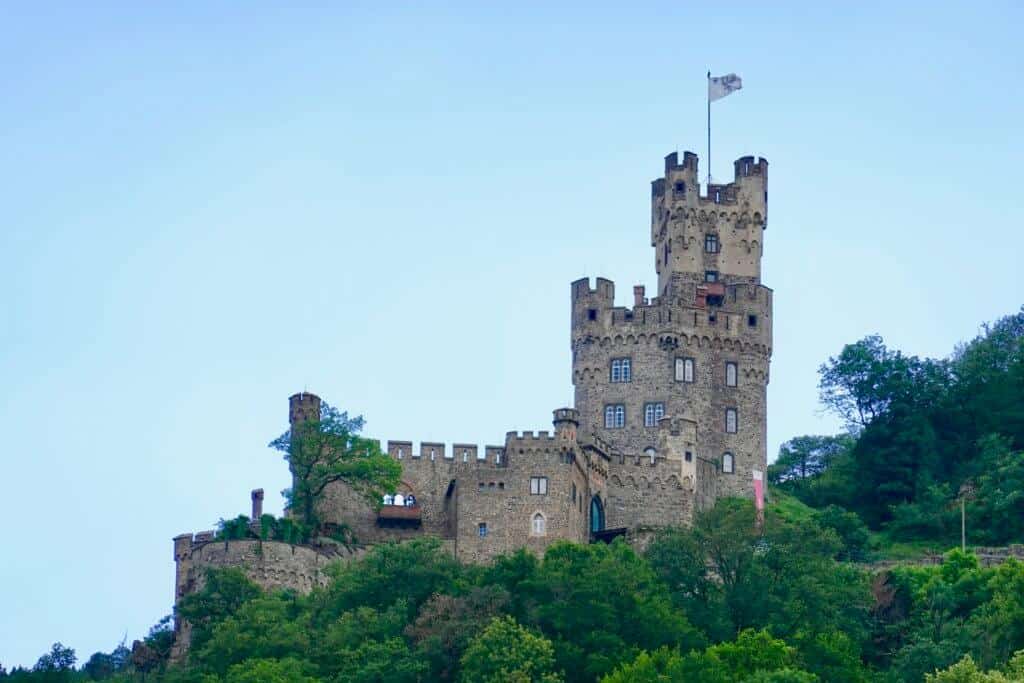
Several castles along the middle Rhine River hold the stories of the wealthy landowners who built fortresses for protection and exacted tolls from boats passing by. Cruising down the Rhine River was one of the highlights of Viking’s Grand European Tour. The castles are nestled on hilltops, high above little hamlets and towns. Vineyards are planted along many south-facing hilltops — a reminder of the delicious wines this area boasts for oenophiles and common folks alike. Our program director narrated this tour as we passed by these scenic spots one warm, sunny afternoon; the best views are from the sun deck.
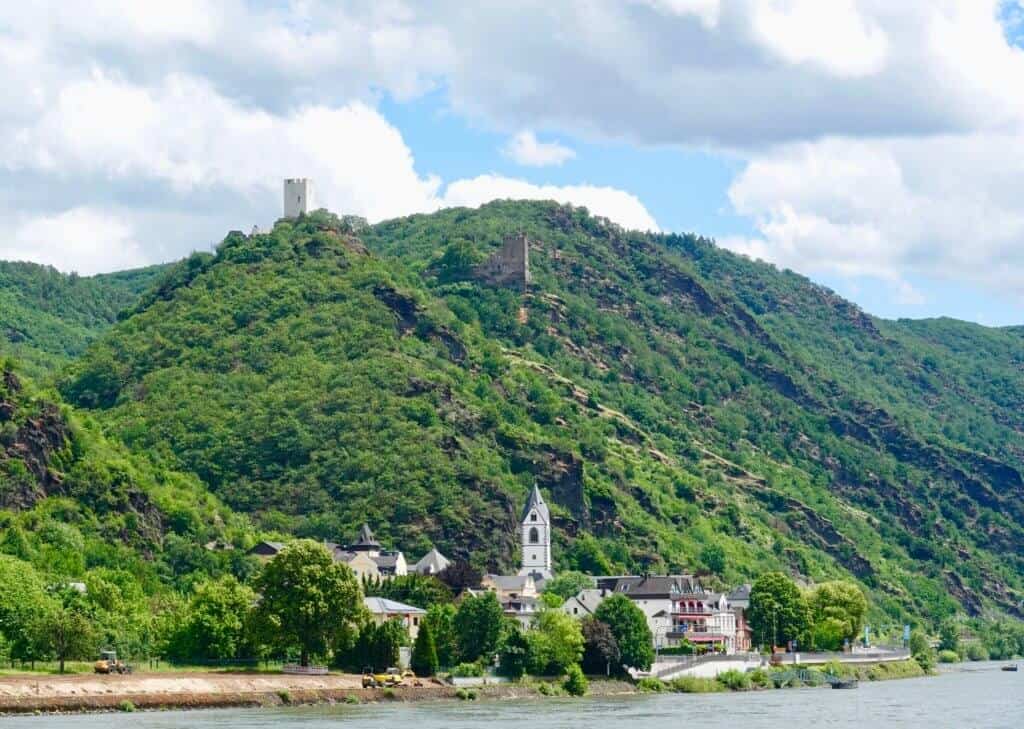



MILTENBERG, Germany
Miltenberg is a charming, small Bavarian town along the Main River with the city walls still visible. As one entered the town’s gates, in times of old, a toll was collected — whether you were engaged in commerce or just visiting. Nowadays, it’s a relaxing place to spend a few hours, strolling the winding cobbled streets, admiring the half-timbered structures with intricate signs denoting a merchants’ trade, window shopping, stopping for a beer, or walking up to the bishop’s house to catch a view of the river and countryside.
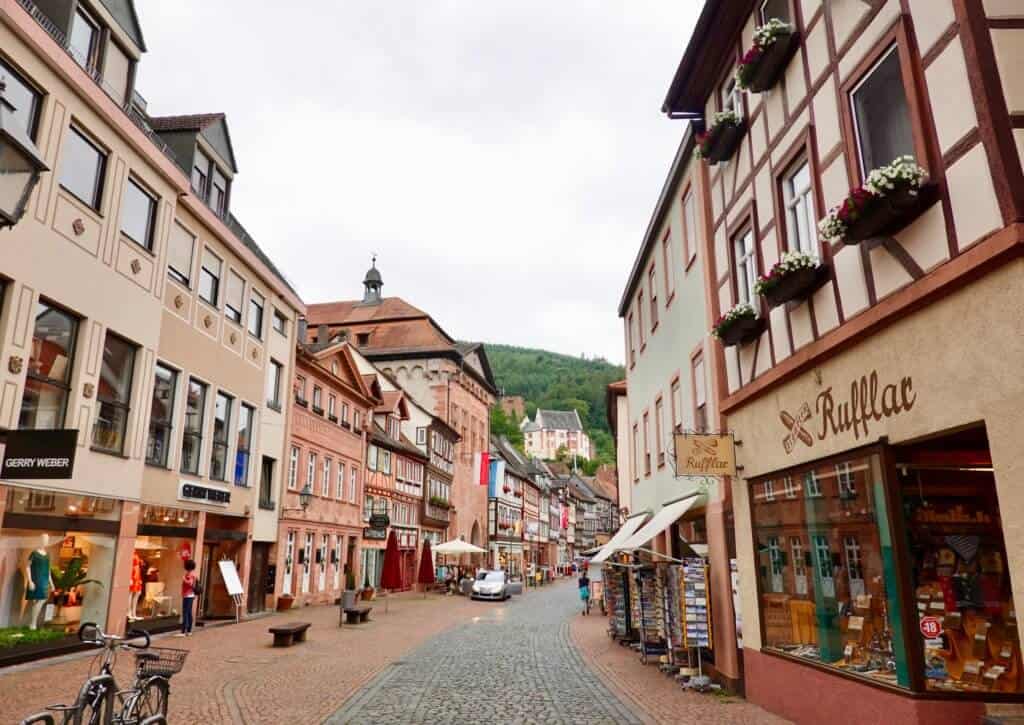

Here there is a monastery where boys as young as seven years old would go to be raised and be taught academics and religion. Boys learned trades at monasteries; in this case, they learned to make beer and bread — including pretzels. The dough for pretzels was commonplace, and people would eat it much like we eat baguettes today since they were then long thin pieces of bread. Over time, the loaves of bread were formed into pretzels. Here’s a story we heard from a guide: during one season of Lent, someone decided to twist the dough so that there’d be three holes, signifying the Holy Trinity. Forming the dough into pretzels also meant that the bread was more portable — a vendor could carry them on a stick and people could easily carry them in their pouches (no pockets back then!).
Zum Riesen, a hotel in the basic shape of a ship, is one of the oldest continuously used hotels in the world. One of its popular features in centuries past was an interior shopping area; this meant prominent ladies dressed in their finery didn’t need to shop in town (which was pretty stinky considering the odors emanating from the horses, the fish market, and emptied chamber pots). Some of its more famous guests were Napoleon Bonapart and Elvis Presley.
Miltenberg is worth a couple of hours’ visit. It’s small and has charm, but there’s not a lot to do. It feels like it depends on tourism, and while it was quaint, it lacked the energy of other charming towns.
ROTHENBURG OB DER TAUBER, Germany
Rothenburg is a delightful Bavarian town that carries you back to the Middle Ages. The town’s name means “red fortress above the Tauber” referring to the Tauber River. This is a well-preserved town with a population of a little more than 10,000 that welcomes tourism.
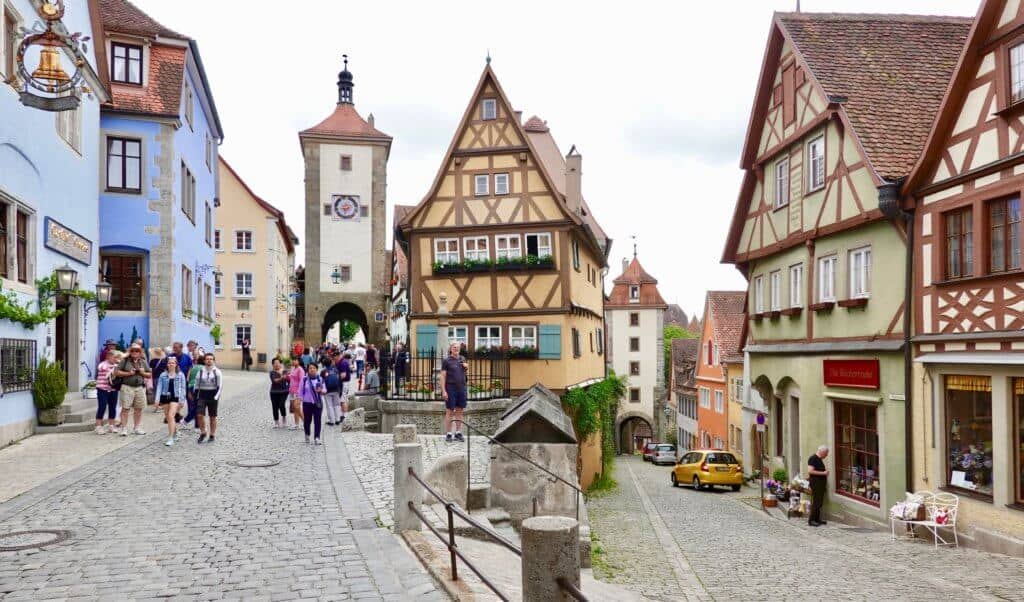
Like Amsterdam and other European cities, Rothenburg’s half-timbered homes from yesteryear have hooks on the top of their facades to pull grain up to the top floor. Here it was stored for the year; this was particularly important when the town was seized by others because the grain was safely stored in the attic. The plentiful fountains in town served as a source of water, of course, but it also guaranteed a water supply should a half-timbered home have caught fire or if the town was surrounded by enemies.
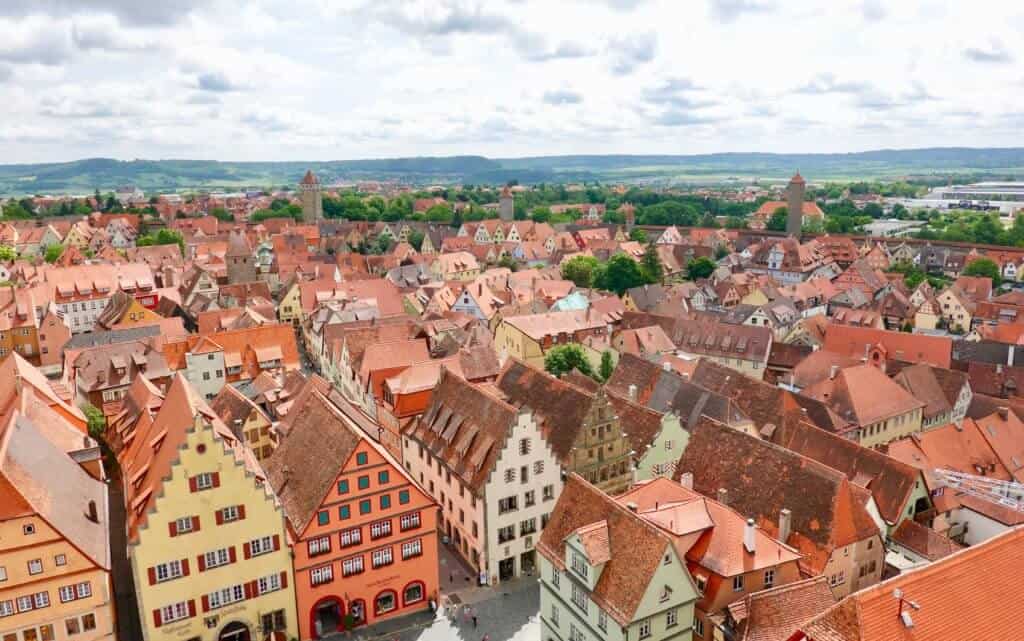


Places of Interest
- Rothenburg Town Hall (Rathaus in German) Bell Tower – Climb the bell tower for a far-reaching view of the town and countryside. You climb a little over 200 steps and pay the entry fee (less than 3 Euros for an adult) as you approach the last 10 steps. Enter the town hall through the doors facing the square, and you will see the steps to the bell tower.
- Town Ramparts – Walk the ramparts, and elevated path, to gain a view of the town and the reinforcements that helped protect the town from invaders.
- Castle Garden (Burggarten in German) – Stroll through the Bishop’s gardens for a peaceful, relaxing time admiring the flowers as well as views of the countryside.
- Bakeries – Sample the snowball cookies — round confections of cookie dough that are deep fried and then either sprinkled with confectioners’ sugar or glazed.
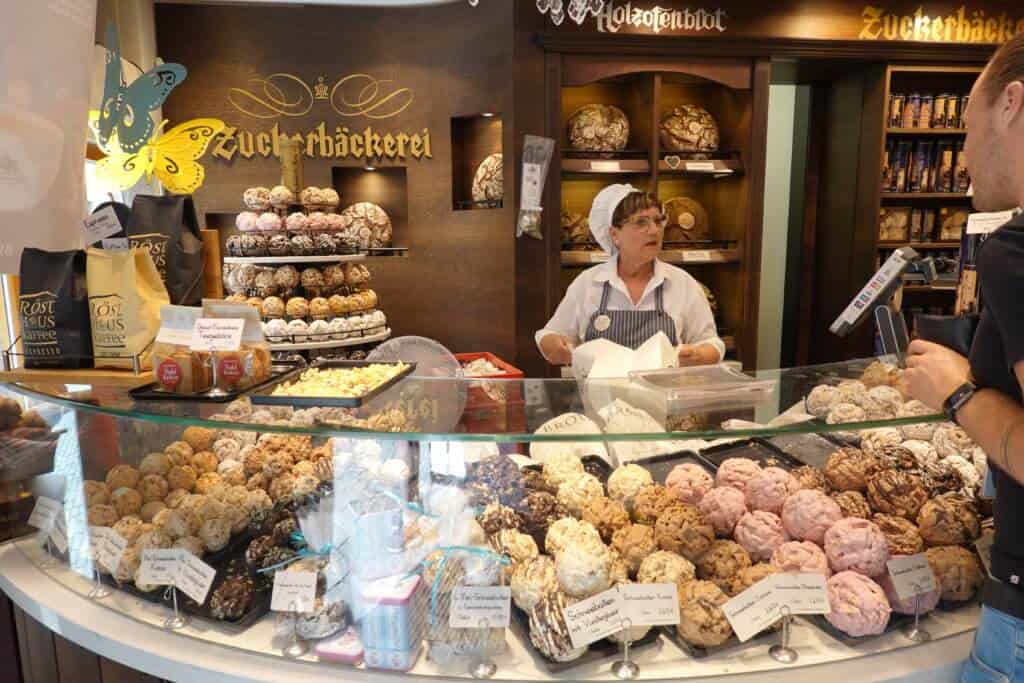
WURZBURG, Germany
Situated on the Main River in northern Bavaria, Wurzburg is known for its culture and wine (a dry white from the Silvaner grape). It’s a university city, and its students help Wurzburg have a younger vibe. As in other stops, our Viking river cruise ship docked within steps of the historic center.
Main Place of Interest in Wurzburg
Wurzburg Residence – This structure was built for the Prince-Bishop of Wurzburg in the 18th century. A UNESCO World Heritage Site, the Wurzburg Residence (Würzburger Residenz in German) and the outside gardens is one to visit. It was designed and furnished to rival Versailles. Why let the Sun King dominate Europe with his triumphant Versailles? So here you have the prince-bishop’s attempt to gain global attention: an enormous palace with a stately grand staircase and spacious rooms adorned with detailed woodwork and artwork. Each room had a specific purpose; the major ones are the White Hall and the Emperor’s Hall. Photographs are not allowed once you enter, but suffice it to say, the architecture and artwork are something to see in an over-the-top kind of way. The money that was spent on this palace is incredible to ponder. Some of the artwork incorporates trompe l’oeil (illusion in art) so some of the frescoes on the ceiling aren’t exactly what you think they are. In fact, there are parts that look as if they’re three-dimensional when, in fact, they’re painted in such a way as to fool the eye. You’ll spend time looking and looking again to try and figure out if that person’s garments are really hanging off the ledge or if it’s an illusion. (Hint: it’s often an illusion!)
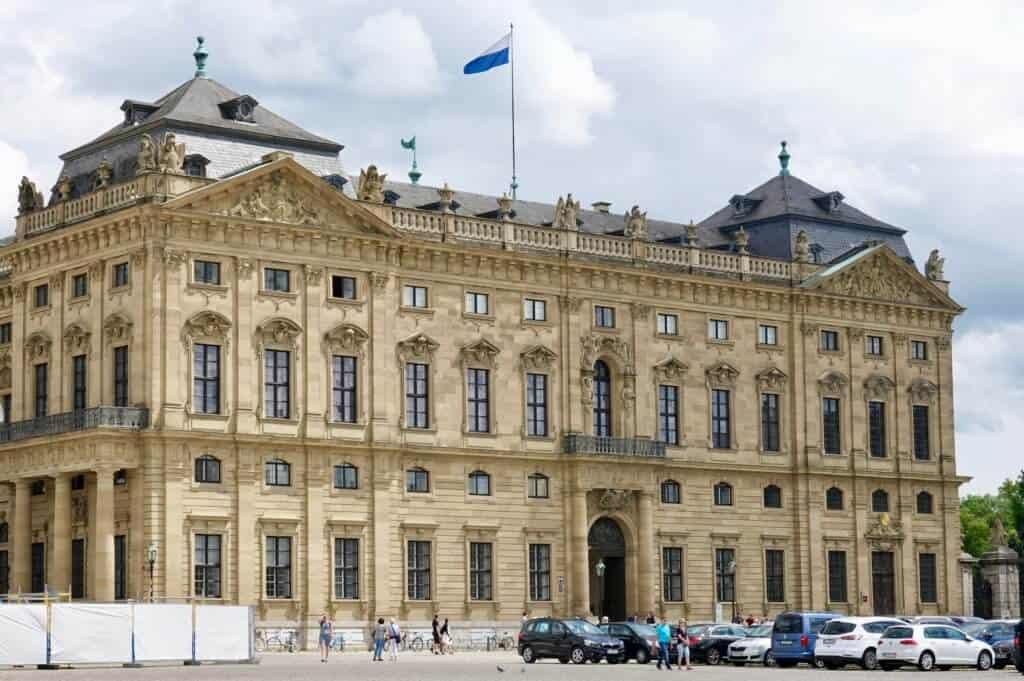
Wurzburg War Destruction About 90% of the Wurzburg Residence was destroyed by Allied bombing in 1945 during World War II. Major John Davis Skilton, a member of the U.S. Army and one of the people instrumental in preserving Tiepolo’s Olympus and the Four Continents artwork on a ceiling in the Wurzburg Residence after it was bombed and left open to the elements, is honored here for his work in helping to restore this historic site after its near destruction. (Prior to the war, he was a curator at the National Gallery of Art in Washington, D.C.) You’ll see a tribute to him as you near the end of the tour. To read more about the work of the hundreds of people dedicated to preserving the artwork during World War II, read The Monuments Men: Allied Heroes, Nazi Thieves, and the Greatest Treasure Hunt in History.
Wurzburg Residence Fun Fact: The Three Musketeers (with Orlando Bloom, 2011) was filmed here. In the movie, Wurzburg stood in for Paris, and the Wurzburg Residence became Versailles.
Other Places of Interest in Wurzburg
- Old Main Bridge – The Old Main Bridge (Alte Mainbrücke in German), spanning the Main River, boasts statues of saints and other historic figures. In nice weather, it’s a gathering spot for folks. When we visited, the bridge was crowded with happy-go-lucky people sipping Franconian wine (served by a local restaurant) and visiting with friends.
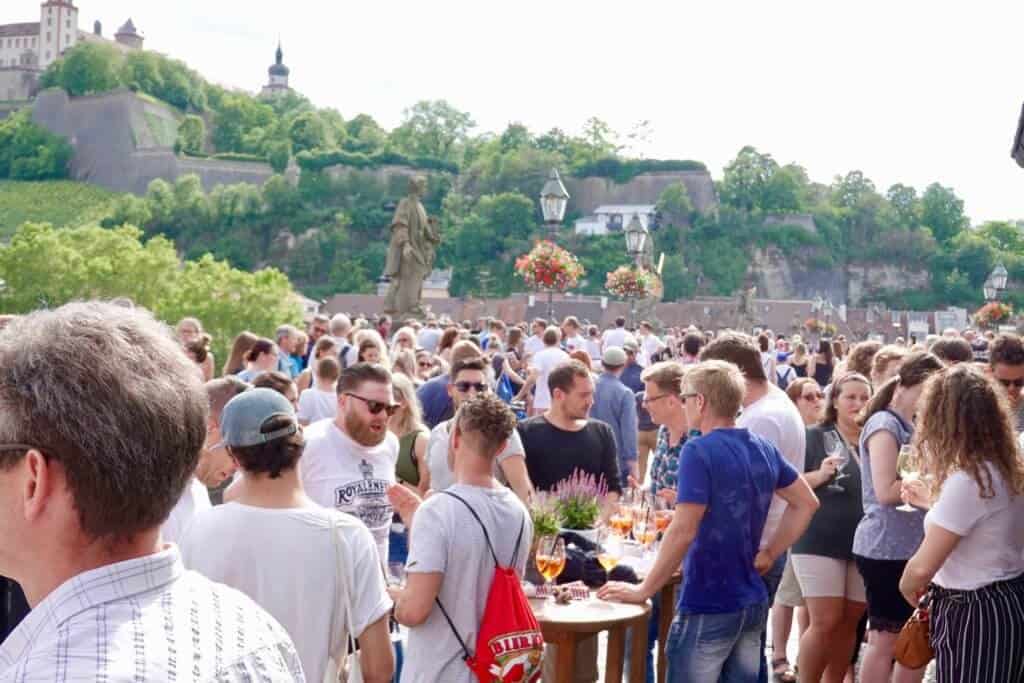
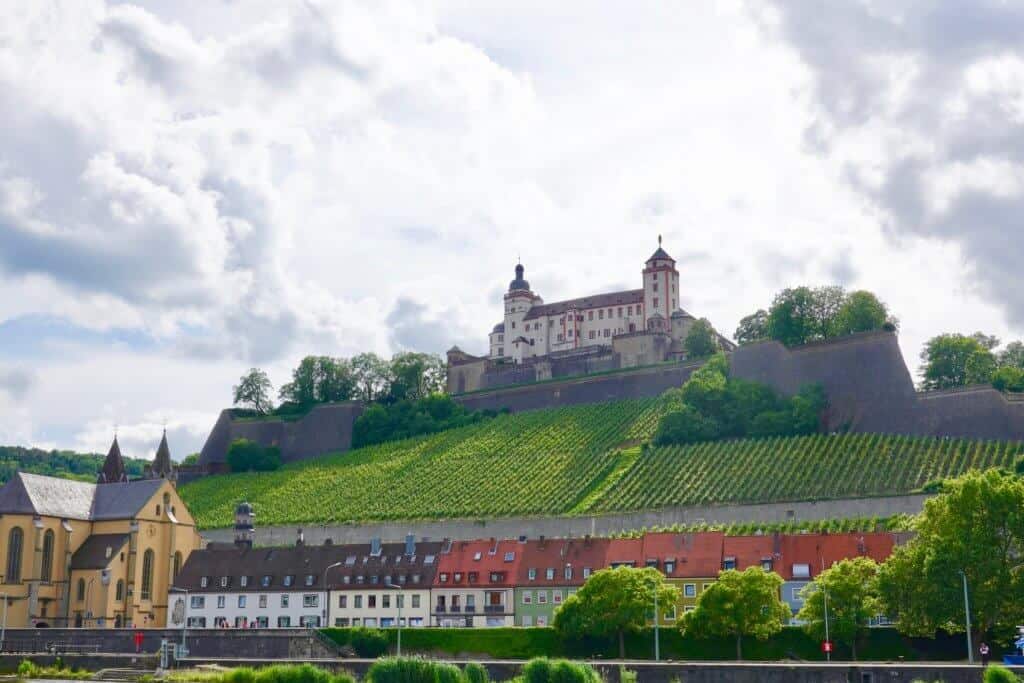
FRANCONIAN COUNTRYSIDE
This excursion takes travelers by a private motor coach to several spots. In addition to what is included below, this excursion includes a relaxing stop at a restaurant where visitors enjoy a cold beer along with pretzels (to dip in their delicious mustard).
Places of Interest in the Franconian Countryside
Zeil
A small town of less than 10,000, Zeil has half-timbered houses and quaint charm. It is also the place that suffered from conflicts as well as a devastating loss of crops in the early 17th century. Some people questioned authority and were accused of being witches; ultimately hundreds were tortured and killed here under the local prince-bishop. When you walk through the town, you can see where people were chained to buildings in the square, so that passersby could look at them, spit on them, and more.
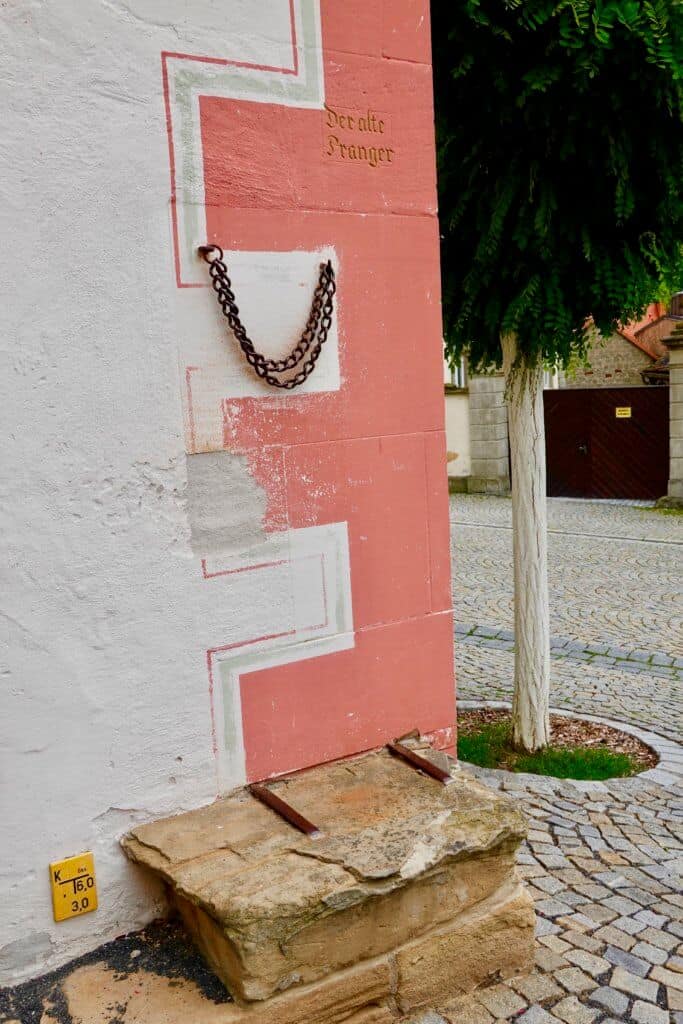

Wallfahrtskirche Maria Limbach
Said to have healing power, this pilgrimage church sits along a road calling no attention to itself. In fact, the exterior is so plain, that one would expect the interior to be simple, as well. This is most assuredly not the case. The interior is ornate, over the top, and showy. The architect also worked on the Wurzburg Residence palace in Wurzburg (which is a must-see in that town), but we were told that he died before he was able to design the outside. Today the church is used by appointment for baptisms, weddings, and funerals. Speaking of funerals, there is a very well-tended cemetery in the back of the property.
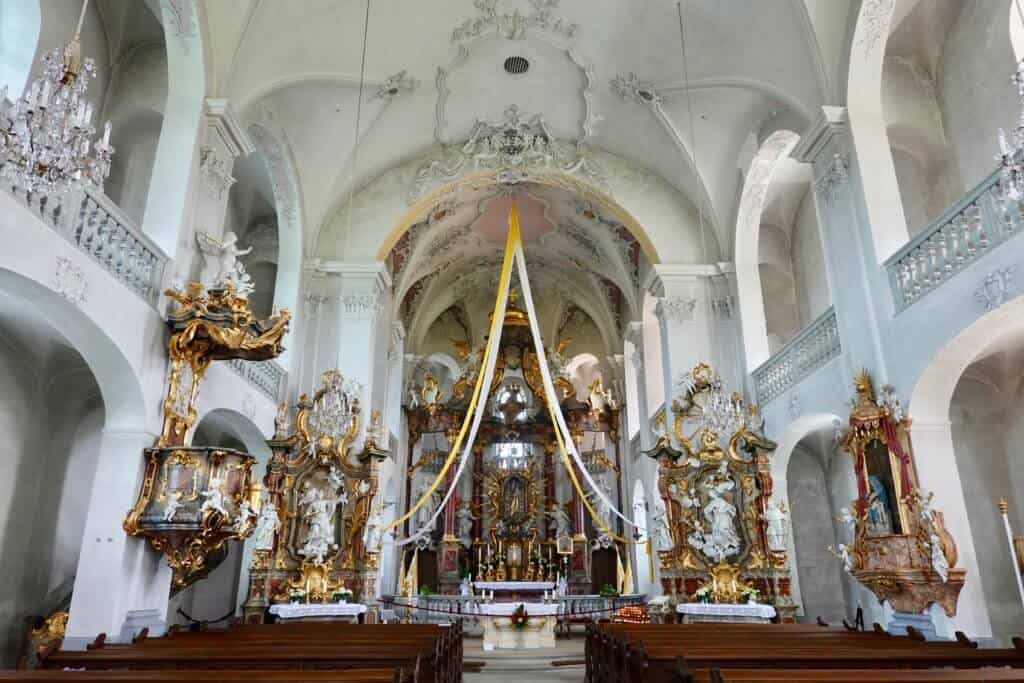
Seehof Palace
Built in the 17th century and located just outside Mummelsdorf (and not far from Bamberg), this was the summer residence (to escape the city heat and smells) and hunting lodge of the Bamberg prince-bishops. Its White Hall was an important stateroom for hosting visitors; its ceilings are magnificently painted. The palace is surrounded by a manicured garden. Our guide told us that there was a salt lick outside the prince-bishop’s bedroom window, so he could watch animals as he peered outside in the morning after he awoke.
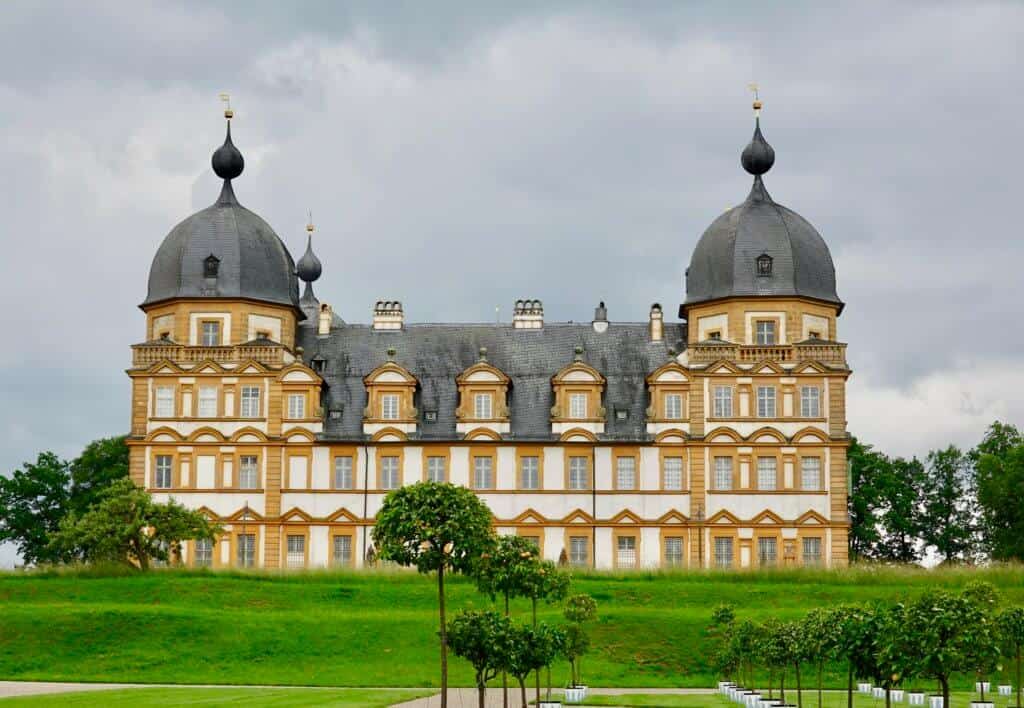


NUREMBERG, Germany
The second largest city in Bavaria (after Munich), Nuremberg (Nürnberg in German) has over 500,000 residents, and over 35% of them are immigrants. A major force in German history, it is probably best known for its Christmas markets and its place in World War II history. When visiting today, you can still see the moat, a centuries-old defensive measure, that encircled the city centuries ago.
It is said that Adolf Hitler and the Nazi party chose Nuremberg as its base due to its central location with Germany, its strong railroad infrastructure (an advantage as it made it easy for the masses to gather here), and the abundant land on the city outskirts which offered the space they needed to build large grounds including Zeppelinfeld (which you can visit) for their rallies. Since about 90% of the city was bombed during World War II, much of Nuremberg was rebuilt and, therefore, not original. Today, Nuremberg has a somewhat odd look to it as it has a patchwork of historic and modern (the 1960s-1970s) architecture. Considering so much of the city’s structures were ruined, there was not a proportional loss of life. I was told by our local guide that this was due, in part, to the large number of beer cellars that were enlarged and converted into air raid shelters. It was Nuremberg, of course, that was the site of the Nuremberg Trials that were held after the war.
Nuremberg Fun Fact: This Bavarian region is known first, for its beer — and second, for its wine. Beer was preferred since if it went bad, you simply made another batch that would be ready in weeks. If the wine went bad, you had to wait until the next year’s harvest before starting the process of replacing the spoiled liquid.
Places of Interest in Nuremberg
- Imperial Palace (Kaiserburg in German) – The seat of power from the Middle Ages, this palace welcomed visiting emperors and other distinguished dignitaries. Today, mere mortals like you and me can visit the palace and its gardens.
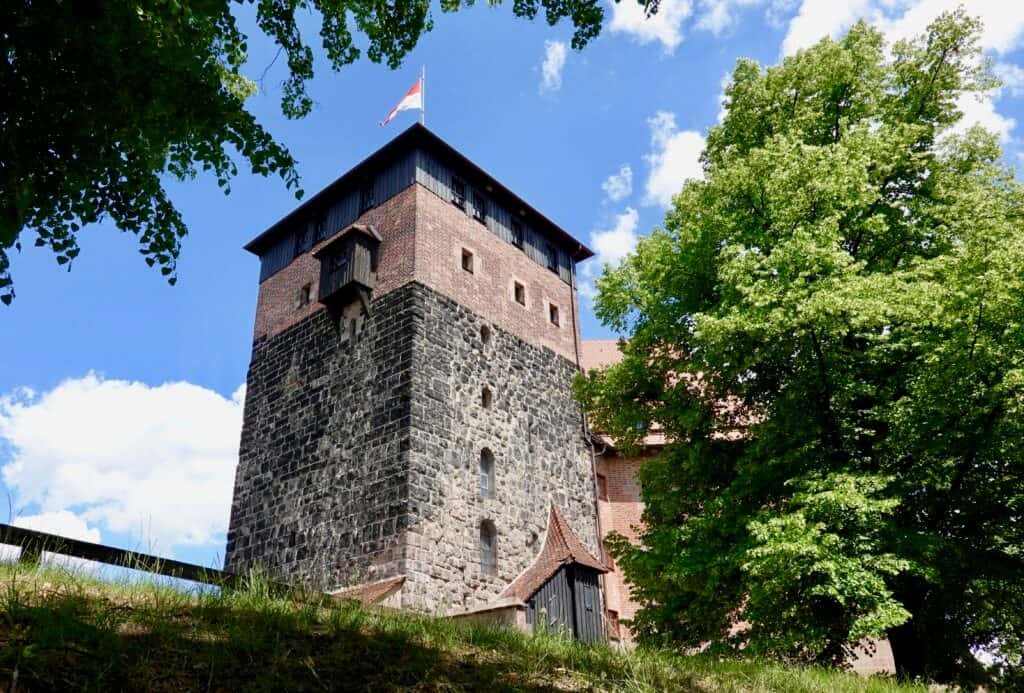

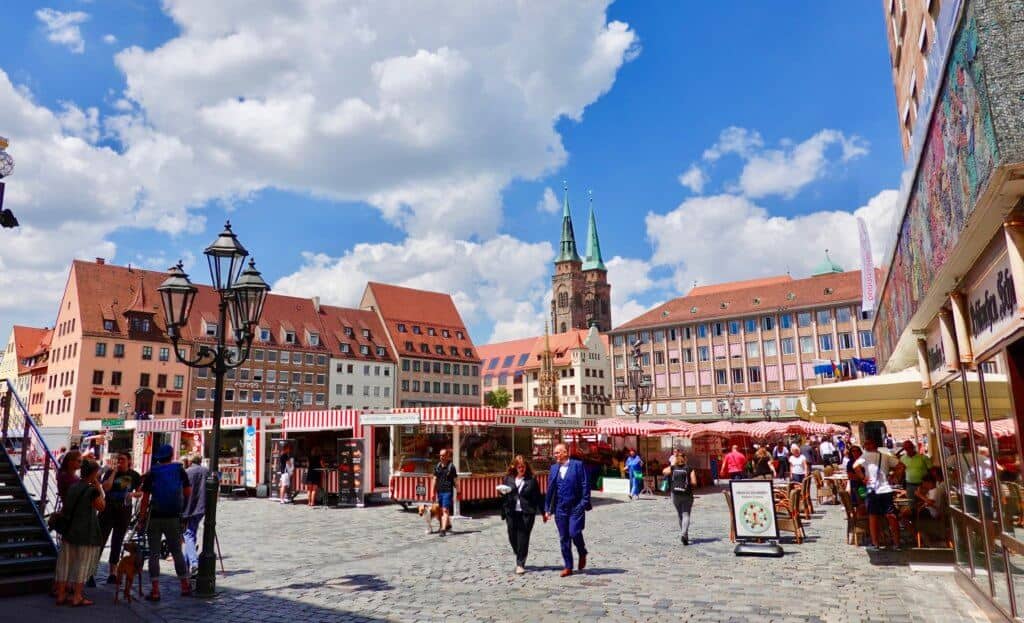

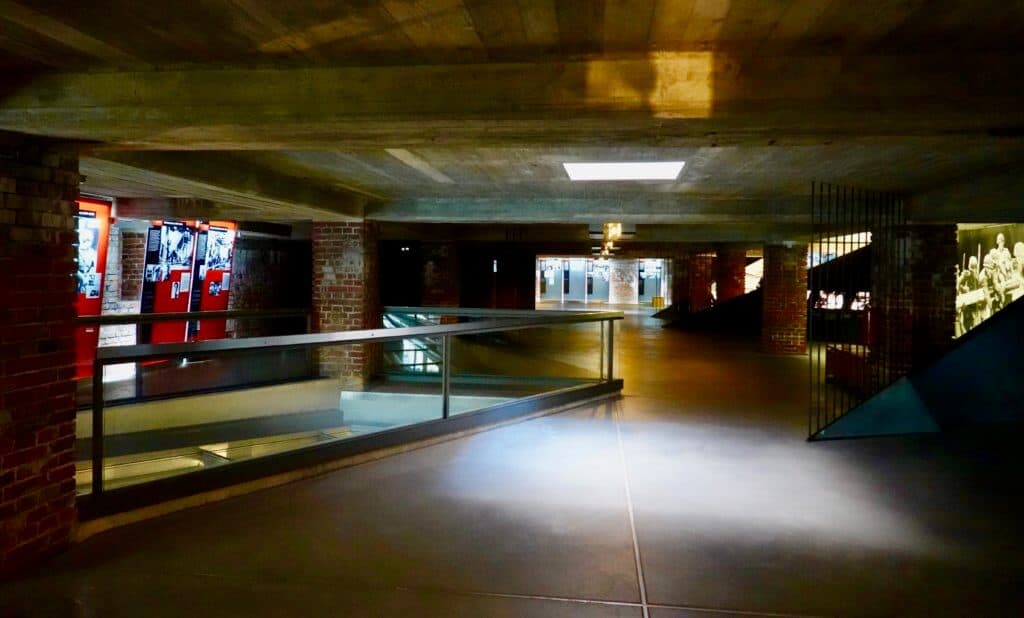
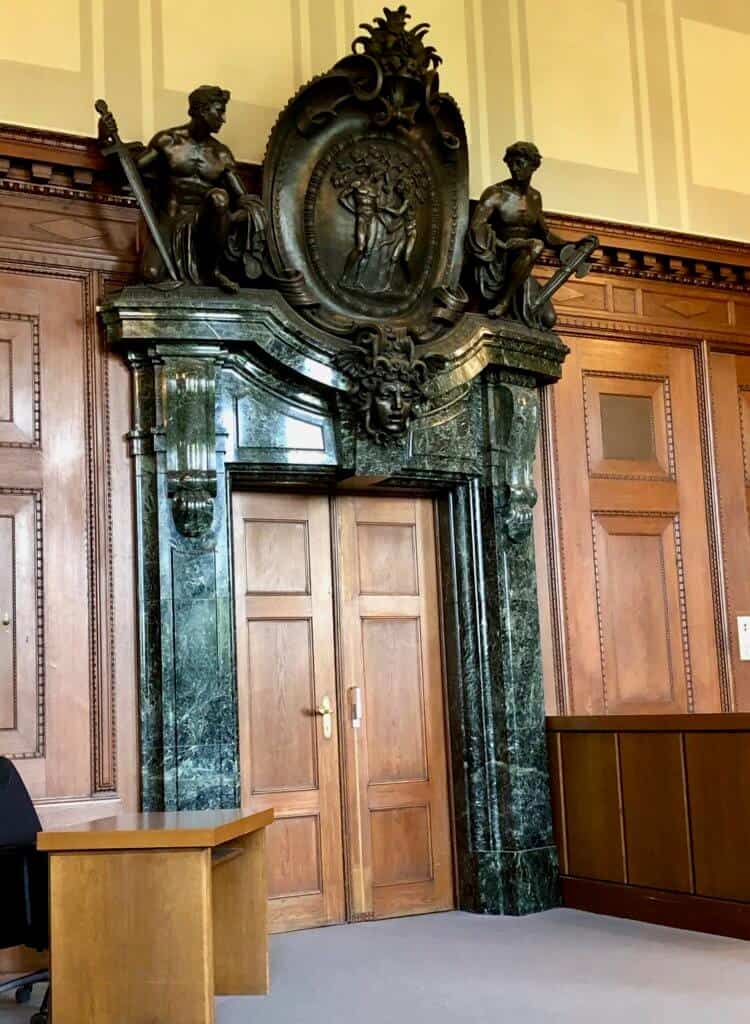

REGENSBURG, Germany
Regensburg is a charming medieval town — the oldest on the Danube River — that still has visible remains from the Holy Roman Empire. (Luckily, Regensburg sits right on the river, so we had a very short walk from our Viking river cruise ship to the town itself.) Regensburg grew to become part of a major trade route. Over the years, wealthy citizens boasted of their wealth by building tall towers (20 of the original 60 survive) within the city. Today it’s home to three universities; the young population makes it a happening place: there are plenty of restaurants, shops, and beer gardens.
Places of Interest in Regensburg
- St. Peter’s Cathedral – Built in 1320, this cathedral has a unique feature: a sculpture of a smiling angel (the first such sculptured angel known at this point). We were lucky enough to enjoy some organ music inside at noon — a welcome respite from sightseeing.
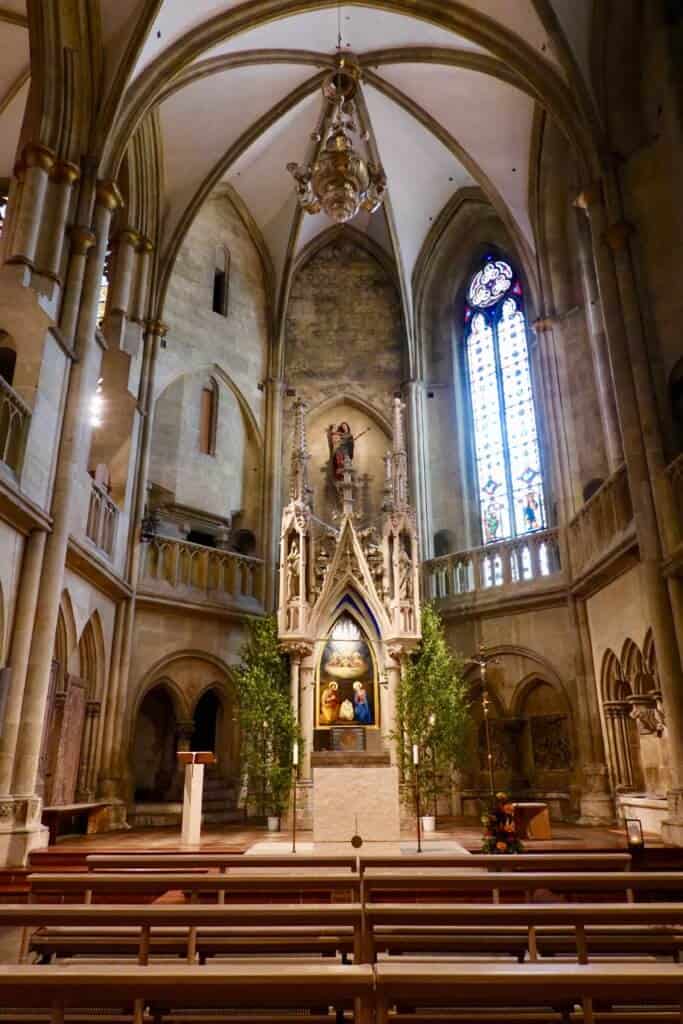

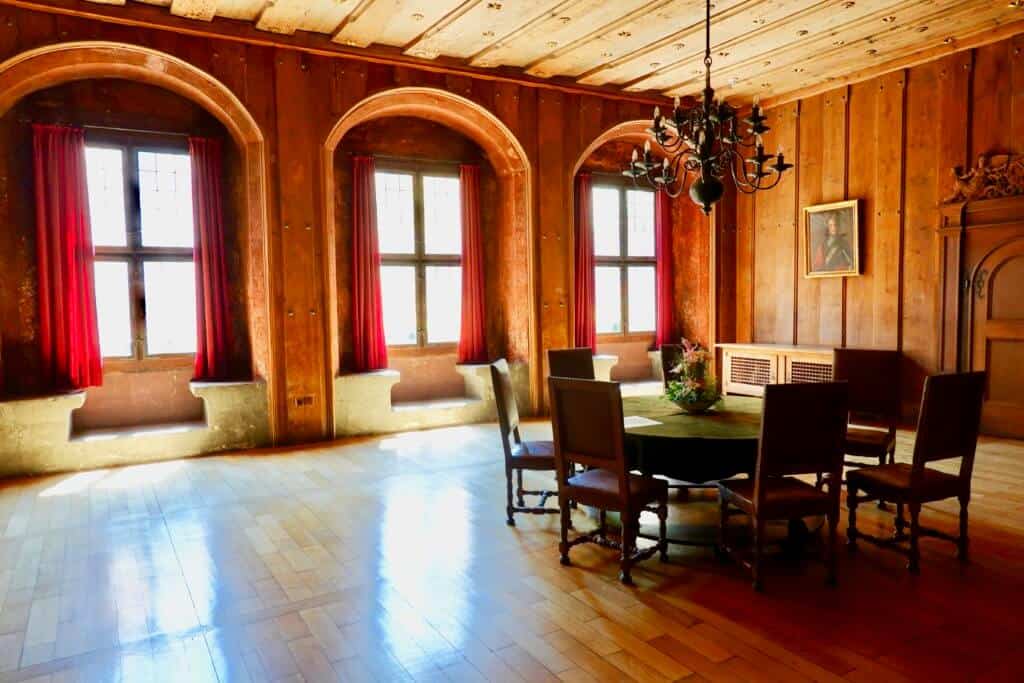
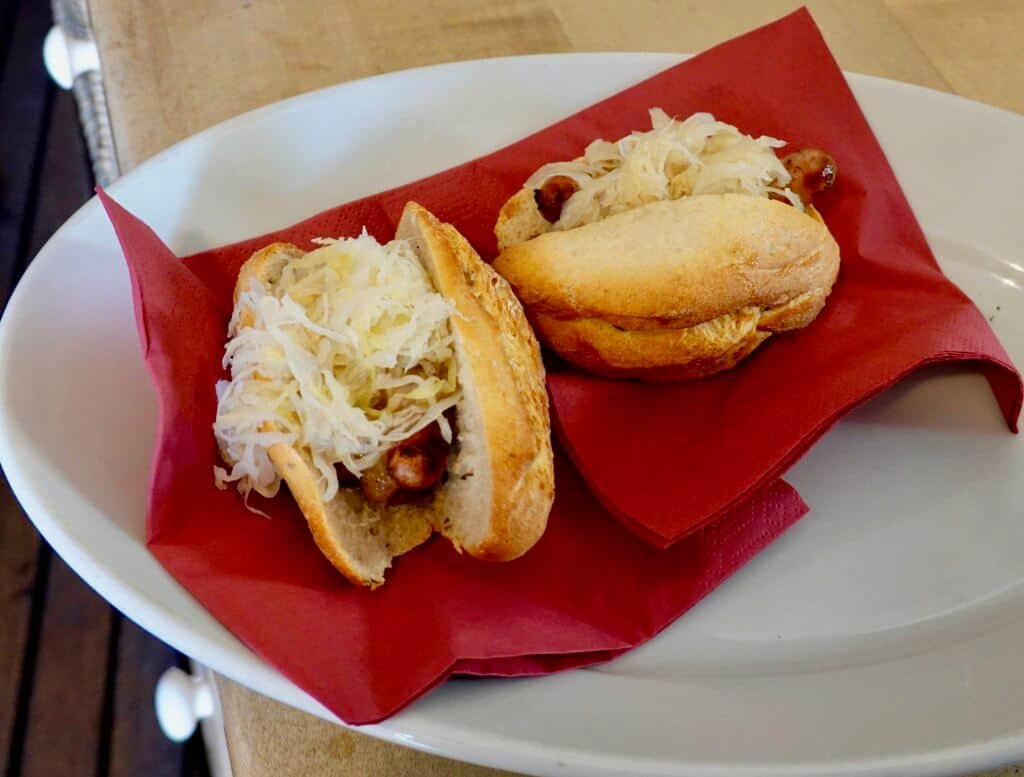
Our visit to Regensburg was a day trip. I wish we had been able to stay a couple of nights. This place has a lively vibe with plenty of sightseeing, cafes, and beer gardens to enjoy. Regensburg was another key highlight of our Viking Grand European Tour cruise.
PASSAU, Germany
It’s a good news, bad news story for this storied town.
Good news: The convergence of three rivers helped Passau (“The City of Three Rivers”) develop into a prosperous town driven by commerce — especially in salt, which was sometimes referred to as “white gold” since trading in salt helped its early economy flourish.
Bad news: Passau’s location on rivers has meant periodic flooding through the centuries.
A delightful town to visit, Passau is the first or last large town along the Danube before entering Austria, assuming you’re heading east. This town of 50,000 includes about 12,000 students at the University of Passau. Despite its popularity, Passau remains an enjoyable town to visit. The streets weren’t crowded; we only saw a lot of people during the midday organ concert at St. Stephan’s Cathedral — it’s a big draw!)
Places of Interest in Passau
- Old Bishop’s Residence (Veste Oberhaus in German) – Built high above Passau on the opposite bank of the Danube River, the castle represented the power and wealth of the prince-bishop (and the Catholic church itself) who built it. The prince-bishop was the town’s top administrator until Passau became secularized in 1803 when Napoleon took over the area. You can walk through the ruins, visit the museum (well worth it), eat at the restaurant, and take in the view from the ancient walls. From here, you can see how the three rivers come together and even the difference in the color of the Inn River (due to the silt from its journey that originates in the Swiss Alps). You can walk up from the street (which we opted to do) or take a bus from Passau.
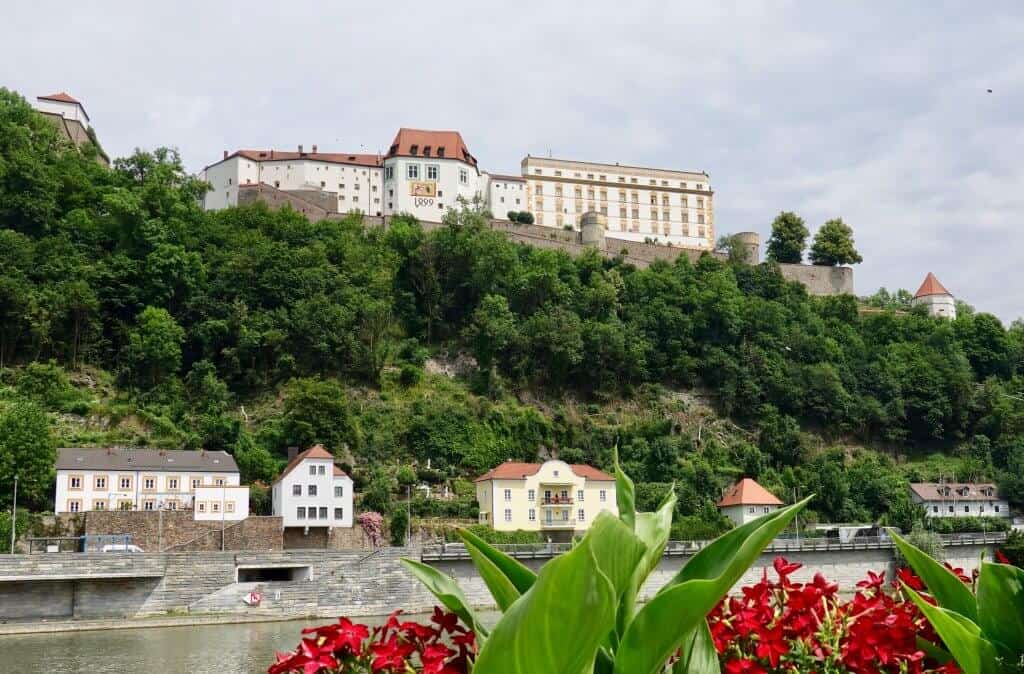
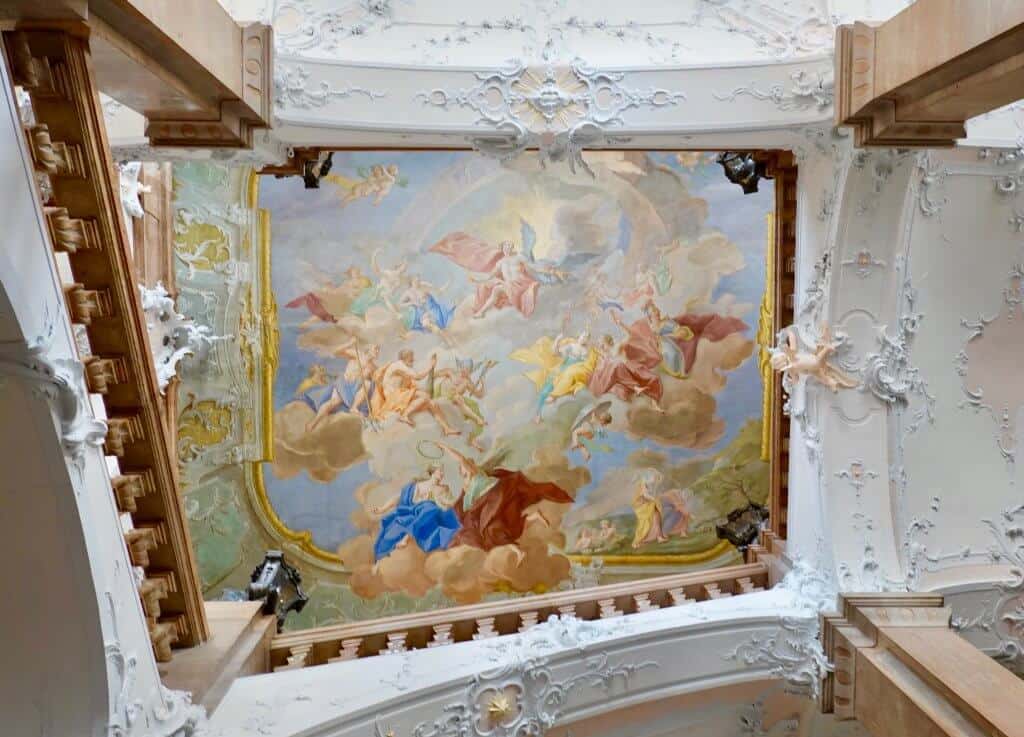
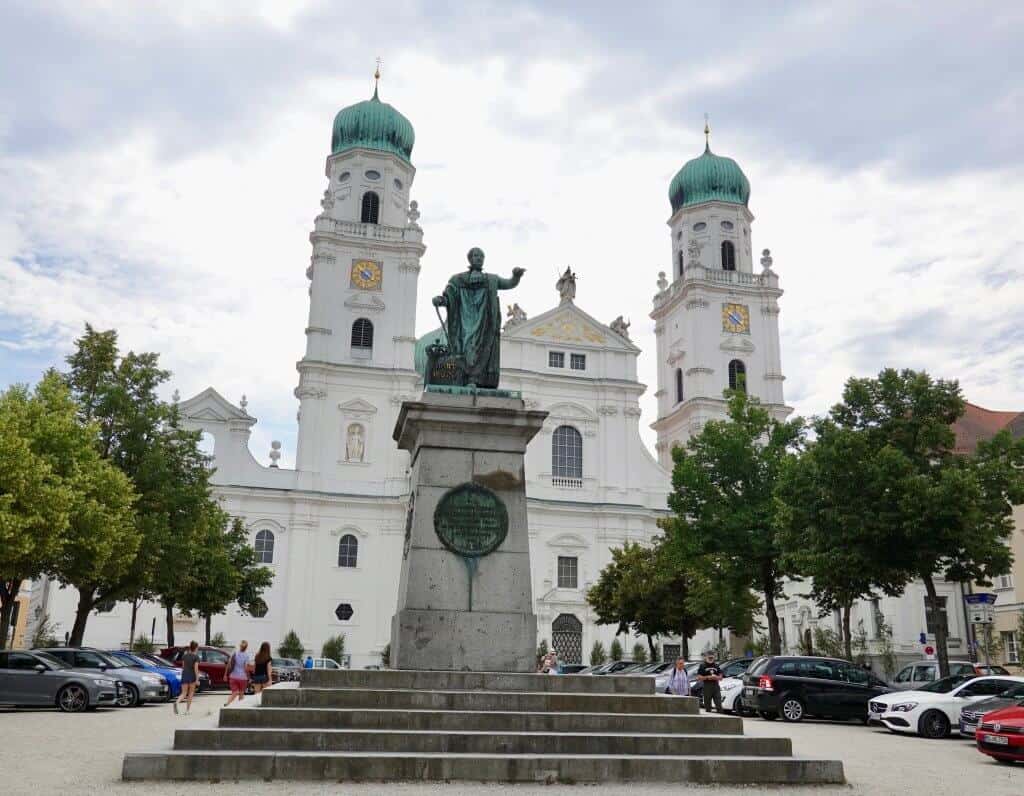
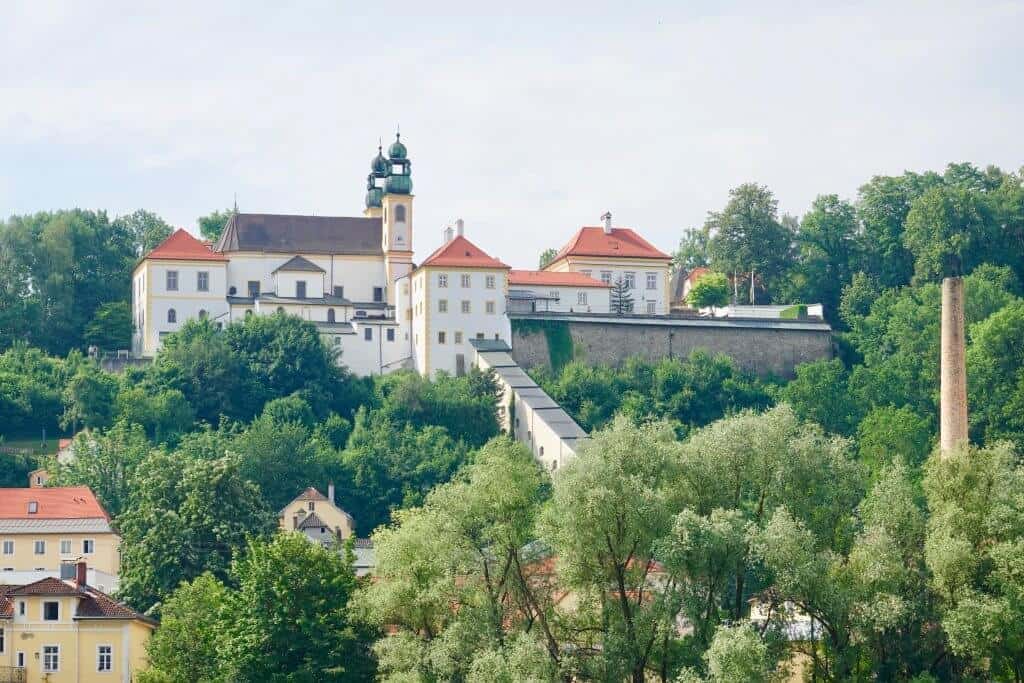
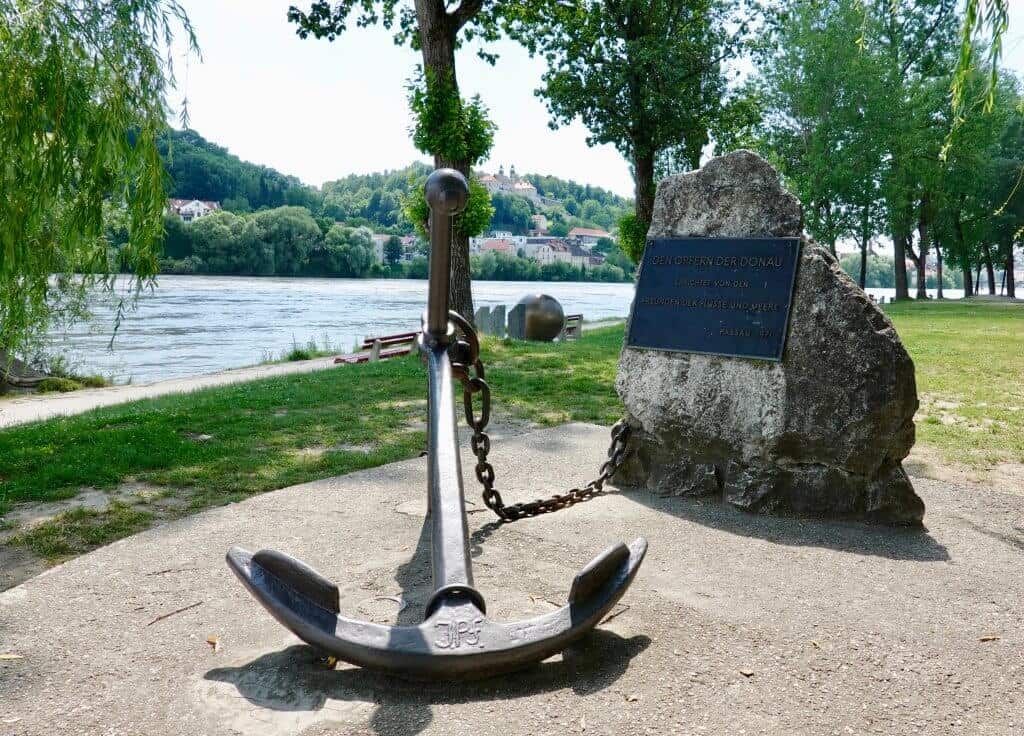
MELK, Austria
I walked from the ship into town on my own along a pebbled path that turned out to be quite peaceful. The path leads you to a bridge, and the town awaits you on the other side. One of the main attractions of Melk is the abbey.
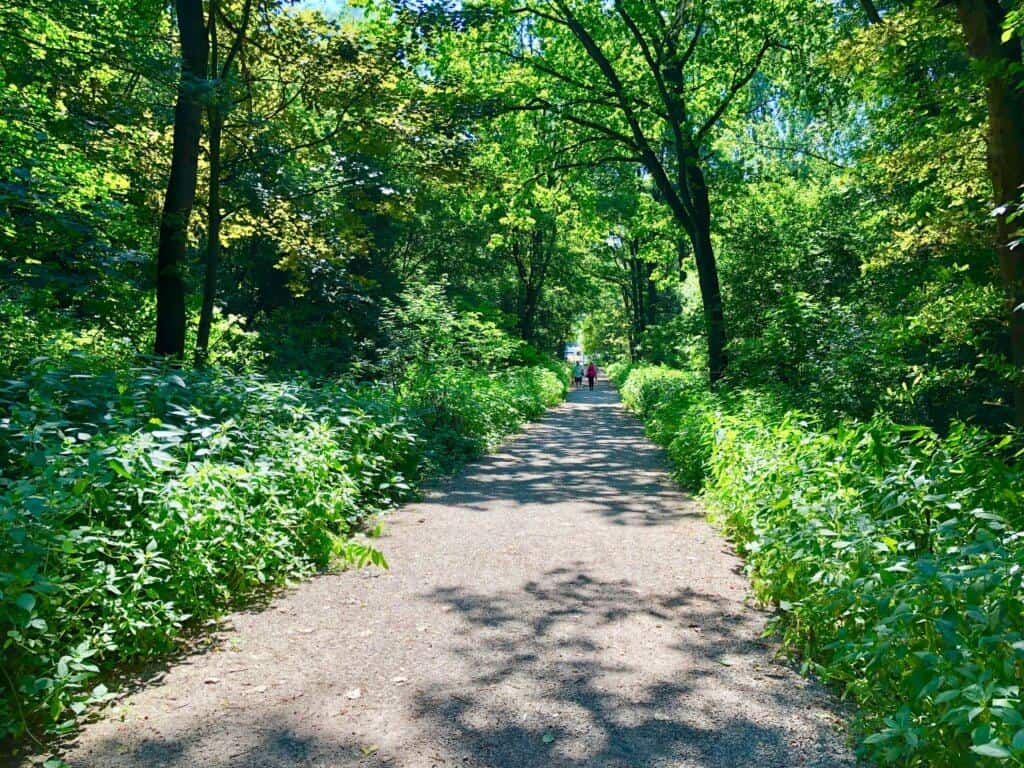
Place of Interest in Melk
Melk Abbey – Sitting high atop a rock in the Wachau Valley in Austria, Melk Abbey (Stift Melk in German) is a UNESCO World Heritage Cultural Site. Founded by Benedictine monks in 1089, today, the abbey is still home to monks and still has an operating school. There’s elaborate architecture and artwork in all areas of the abbey along with a library with an extensive collection of manuscripts. No photography is allowed inside.
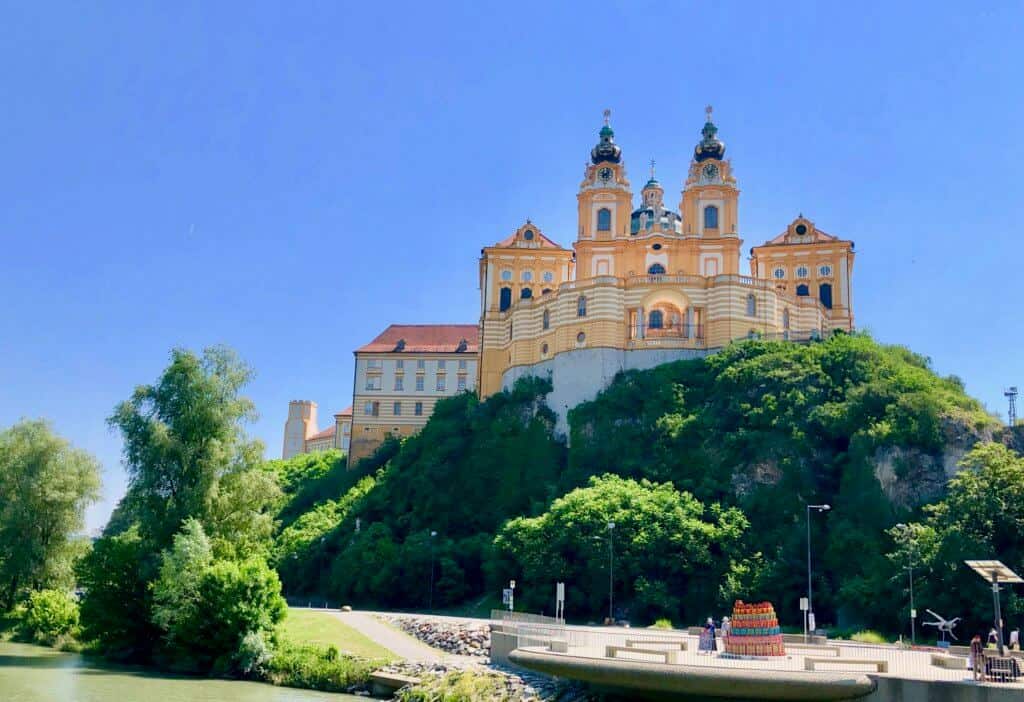
KREMS, Austria
A city of about 24,000, Krems (or, as it’s sometimes known, Krems an der Donau) was a brief stop for us while on our Viking Grand European Tour river cruise. Therefore, I am only highlighting what we visited: Gottweig Abbey.
Place of Interest in Krems
Gottweig Abbey – Another UNESCO World Heritage Cultural Site, Gottweig Abbey is a Benedictine monastery that dates back to 1083 on a hilltop overlooking the Wachau Valley along the Danube River. The Abbey has vast land holdings, including 13,000 acres of forest. Their main income is derived from timber, tourism, and wine. There are 42 monks with ties to this monastery; some live here, and others live and work in over 20 parishes in surrounding communities. Centuries ago, this was a safe harbor for townspeople to congregate during wartimes.
The church is both Gothic and Baroque in design. Some of it was destroyed in an 18th-century fire as there was no local water source to halt the fire high atop the hill. This has since been rectified, of course. The altar is adorned by a large painting of Mary, its patron saint. Above the large painting of Mary is another one that is actually one of several that are switched out depending on the Christian season.
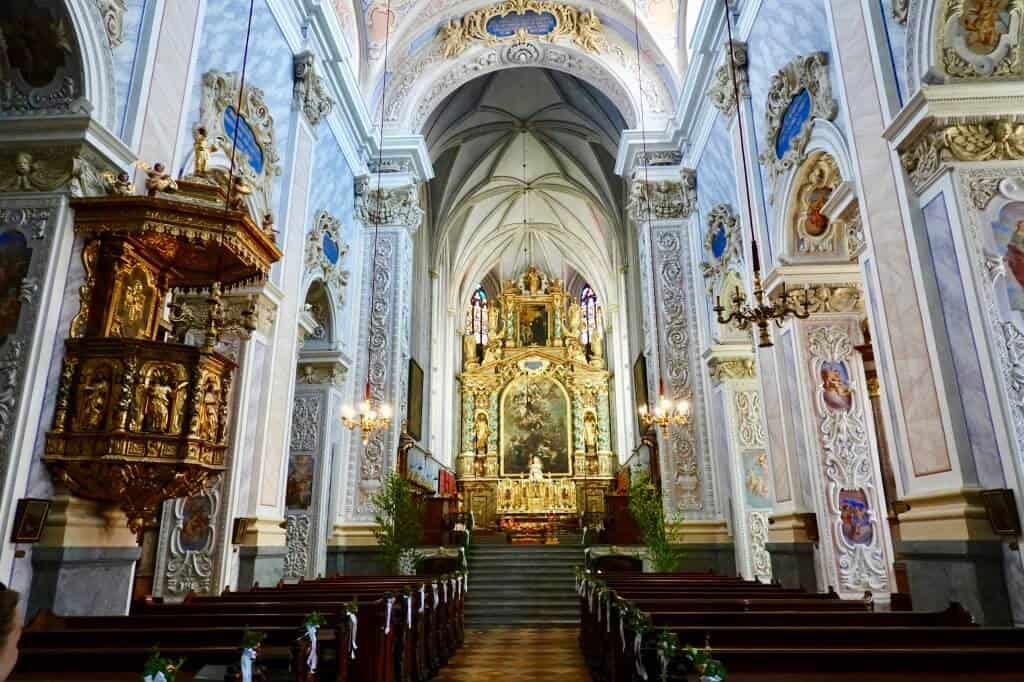
In addition to the church, there is the imperial wing of the abbey with a grand staircase (with small risers, as was the custom centuries ago when women would ascend or descend stairs as if floating — never allowed to show their ankles). The magnificent ceiling fresco above the staircase was painted in 1739 and features Emperor Charles VI and Maria Theresa, the Hapsburg empress. The ceiling fresco features some trompe l’oeil, an optical illusion technique that fools the eye into thinking something is three-dimensional when, in fact, it is not. Other buildings on the campus are an infirmary for the monks (since no one other than the monks can enter the actual domicile of the monks), a retreat house, a youth hostel area, a restaurant, and a gift shop.
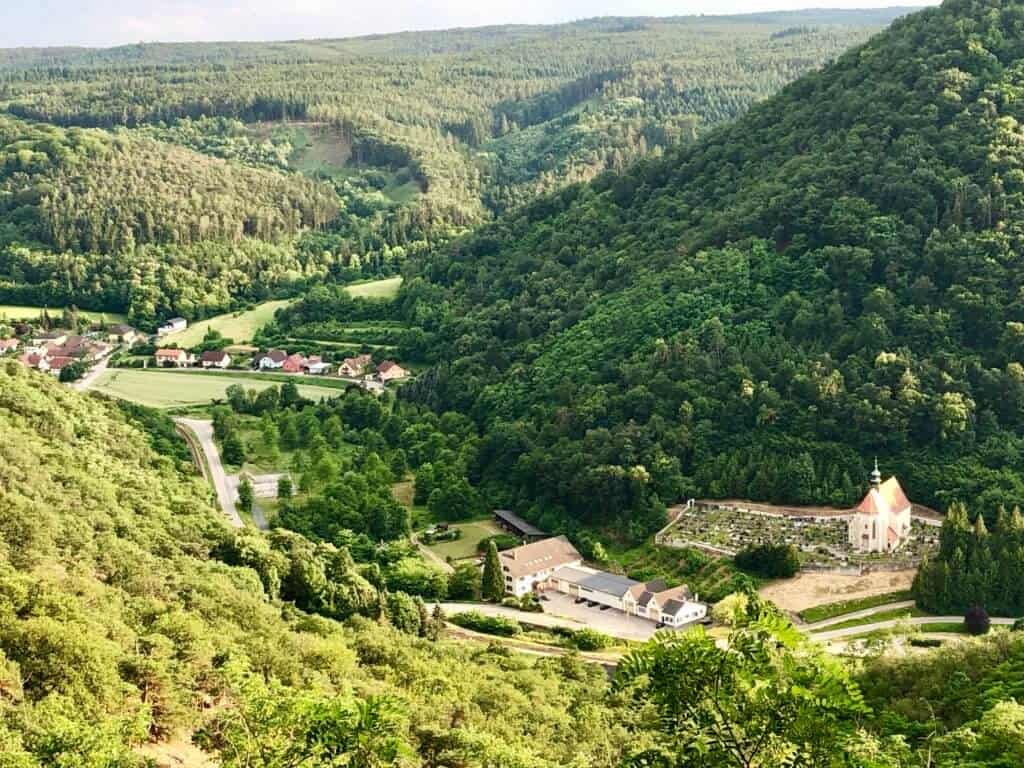
Each of the monks has a responsibility in the community. The one we met was in charge of tourism, and one of the things he oversees is their Instagram feed. Here’s a peek at it: @goettweig, @stiftgottweig.
After our excellent tour by an Abbey guide, we feasted on a dinner on the terrace (overlooking the Wachau Valley), which was a visual and gastronomic delight. If you’re in the area, this is worth a visit and a meal. They boast a variety of wines as well as apricot juice and jams. (Apricots are an important agricultural product in the area and are found in many local products.)
VIENNA, Austria
Austria’s capital and largest city, Vienna, accounts for about one-third of the country’s population. It’s home to several international organizations, including OPEC. Sometimes dubbed the City of Music for its rich musical history, it’s also sometimes referred to as City of Dreams because of one of its famous former citizens, Sigmund Freud. Its two UNESCO World Heritage Sites (the Historic Center of Vienna and the Palace and Gardens of Schönbrunn) are popular with tourists.
Vienna is huge compared to the other river towns on our Viking Grand European Tour cruise from Amsterdam to Budapest. It boasts just less than 2 million people. There is much to do and see in Vienna and plenty of excursions from which to choose. We took a walking tour of the city and a guided tour of the Hapsburg’s summer home, Schönbrunn Palace. The palace has more than 1,400 rooms, but only a portion are for public view. We had been spoiled by all the delightful towns on our river journey south. What we found in Vienna and at Schönbrunn Palace was wall-to-wall people (and this was before schools were on summer vacation). This was a city overrun by tourists. To be honest, my husband, Pop, and I opted to enjoy some of the coffee houses, window shop, and then relax in the relative peace of the Viking river cruise ship. The mobs of people turned us off. Hopefully, you will have a different experience.
BUDAPEST, Hungary
Budapest (actually pronounced Budapesht because the “s” in Hungarian is pronounced “sh”) is the capital of Hungary. Formed in 1873, Budapest — with a population of over 1.7 million, the tenth largest city in the European Union — is a marriage of two parts. Buda sits on the western side of the Danube River (the river is Danu in Hungarian) and Pest on the eastern side. It attracts over 14 million visitors annually as it’s become a popular destination.
Places of Interest in Budapest
- Buda Hill Funicular – There are other ways to get up to Castle Hill (by walking or taking the bus), but this is a fun and inexpensive way to make the trip. If possible, get in the first car so you get the best views as you ascend.
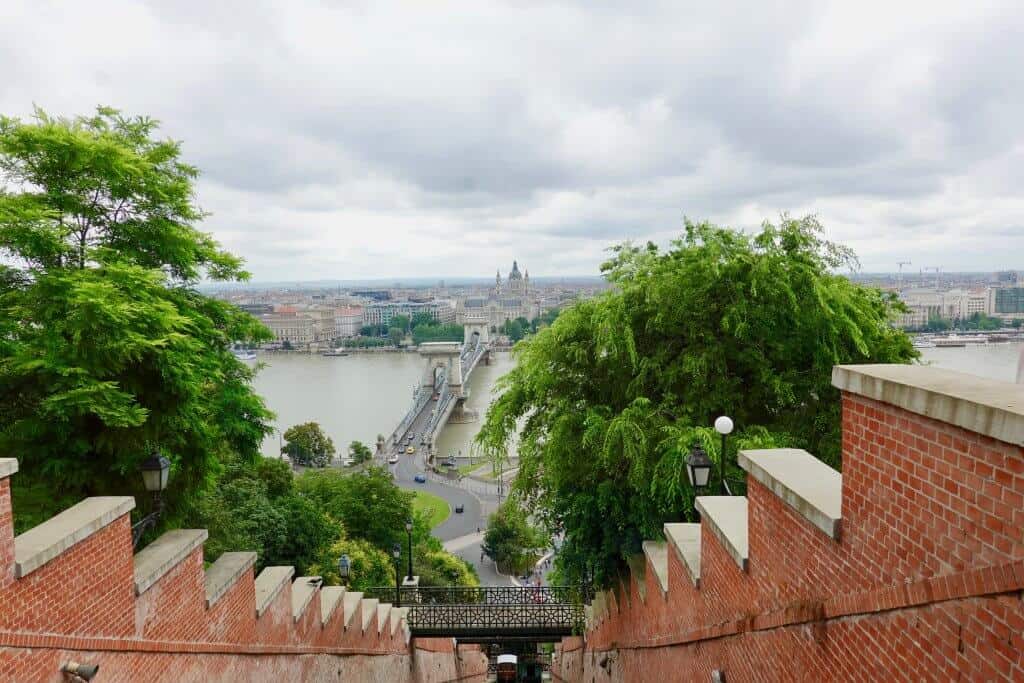
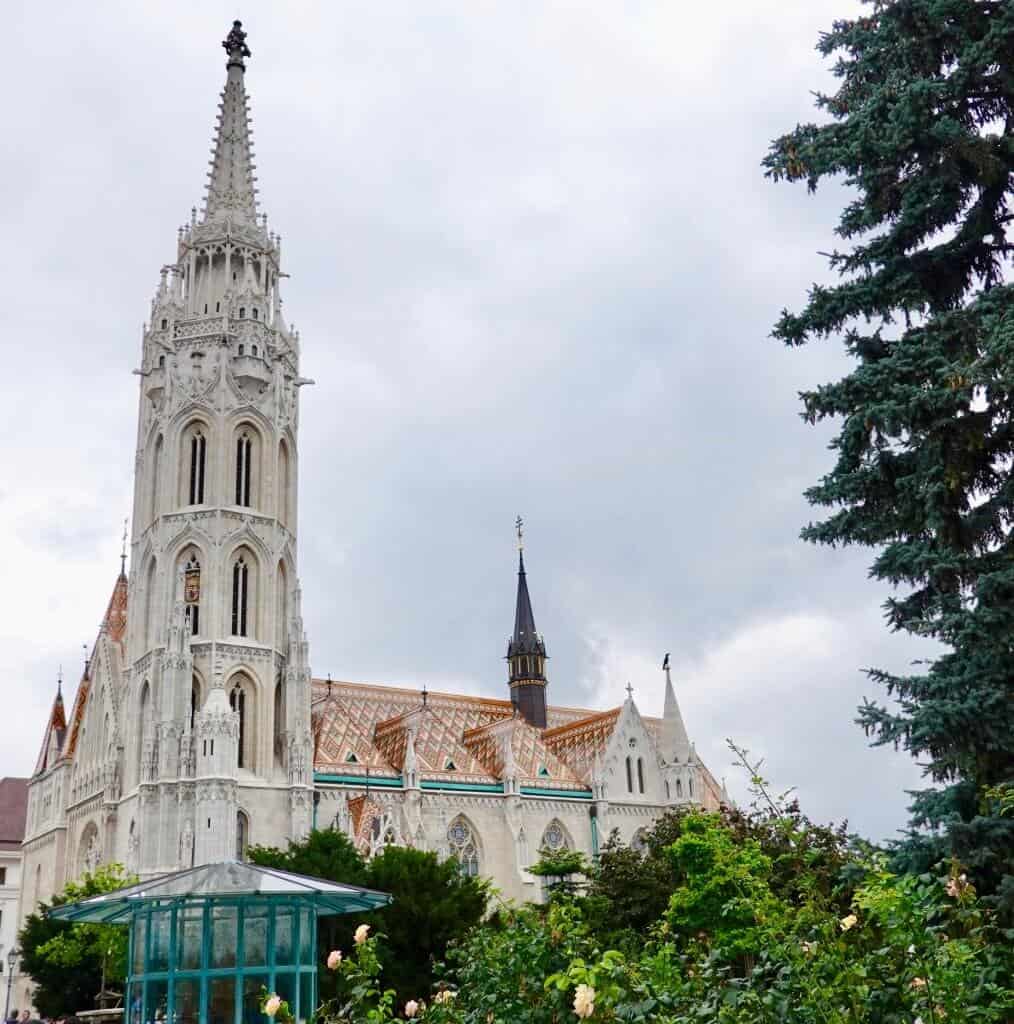
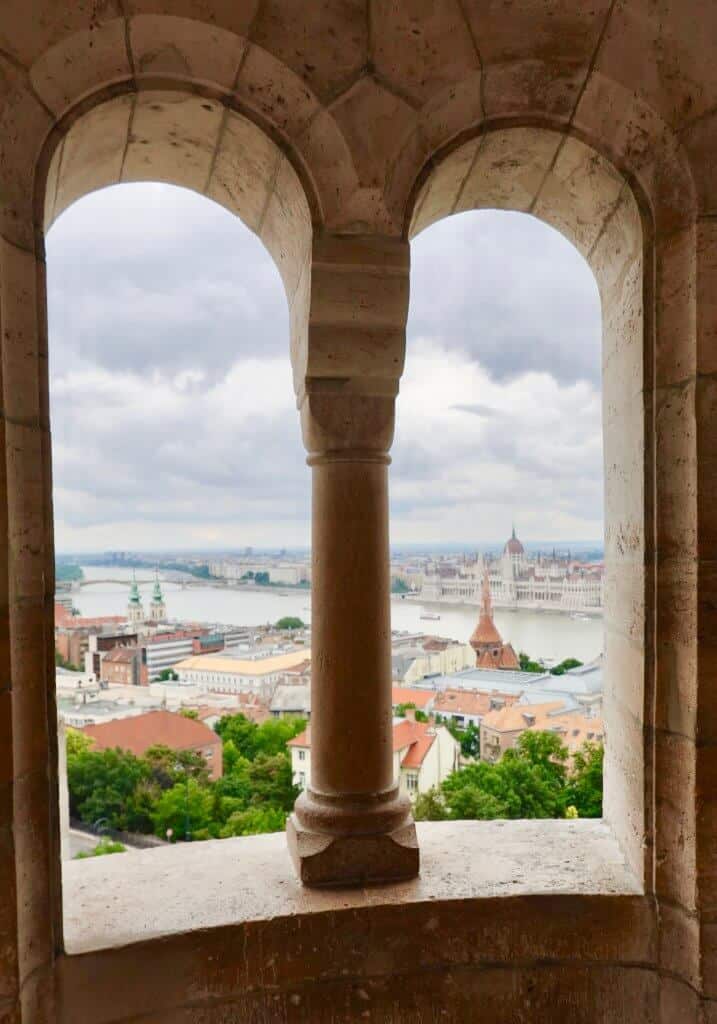
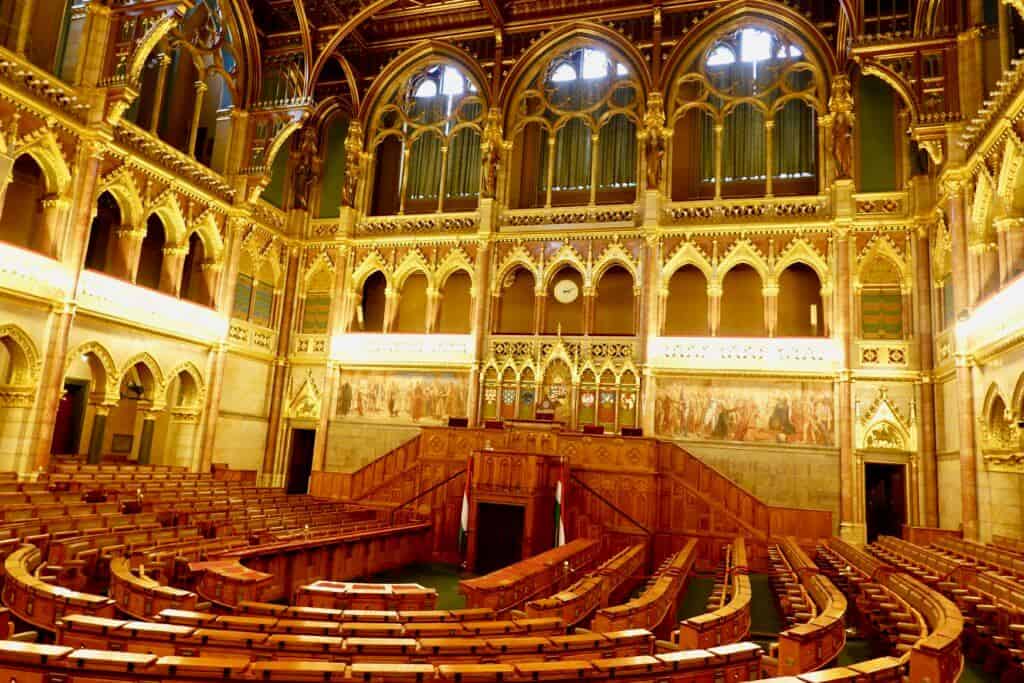
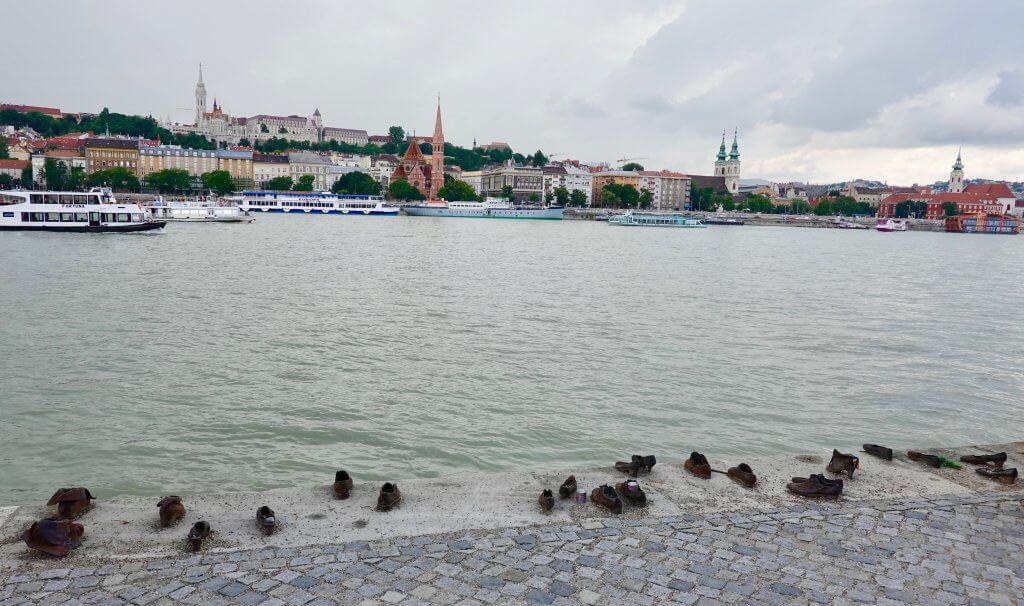

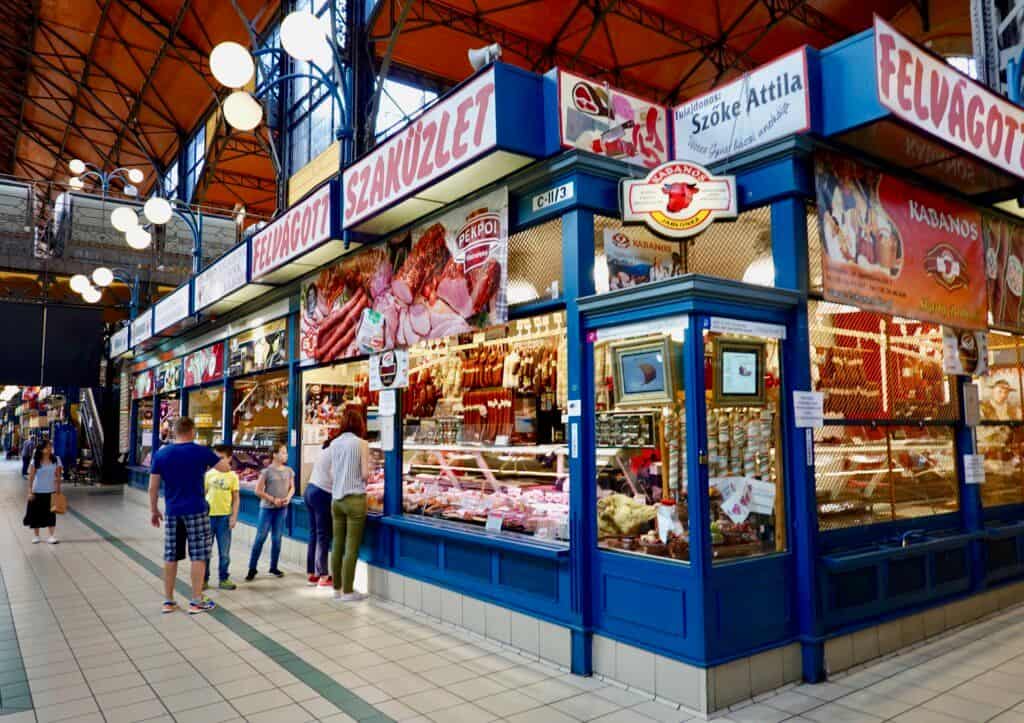
We had two short days in Budapest, but you may want to add more time to explore all the city offers. Many river cruisers add time at the beginning or end of their Viking Grand European Tour cruise (depending on if they are beginning or ending their cruise here), so they have enough time to do this city justice.
Related Articles
Viking Related Articles
- Viking Ocean Cruises: The Ultimate Guide
- Viking Ocean Cruise Excursions: What You Need to Know
- Viking Cruises: Best Action Steps to Take After Booking a Cruise
- Viking River Cruises: The Complete Guide
- Best Sights to See on a Viking Grand European Tour Cruise
- Viking Antarctica Cruise: A Complete Guide for Adventurers
General Travel Planning Articles
- Best Apps and Websites for Savvy Travelers
- Travel Lightly: Top Ten Tips for Your Next Trip
- Travel Planning Timeline
- Expert Tips for Traveling to Europe for More Fun, Less Stress
- How to Use Google Translate While Traveling
Final Thoughts
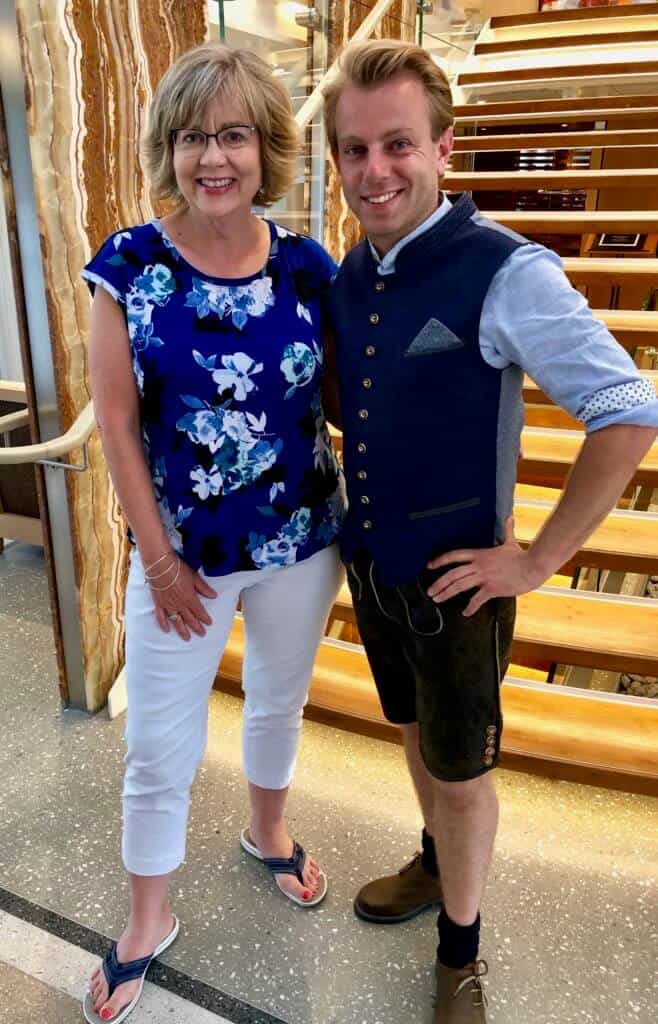
The Viking Grand European Tour river cruise offered the best of the Rhine, Main, and Danube rivers. We appreciated the well-planned ports of call and excursions. In addition, Viking did a fine job communicating with us about what we were to see each day. The evening port talk by the program director (before dinner) prepared us for the next day’s destination. Also, the Viking Daily, a four-page handout that was left in our stateroom each evening while we were at dinner, outlined the city we would be visiting the next day along with all the important times to note (docking, excursions, departure) and not-to-miss highlights and notable restaurants and shops of each destination. The Grand European Tour was certainly a grand experience for us!
To ensure you remember all the great experiences on your cruise, take lots of pictures and create a photo book of your journey when you return home. You’ll be glad you did!
Comments?
If you have experiences to share from any of the cities mentioned in this post or as a passenger on the Viking Grand European Tour, feel free to share your thoughts below! 🙂

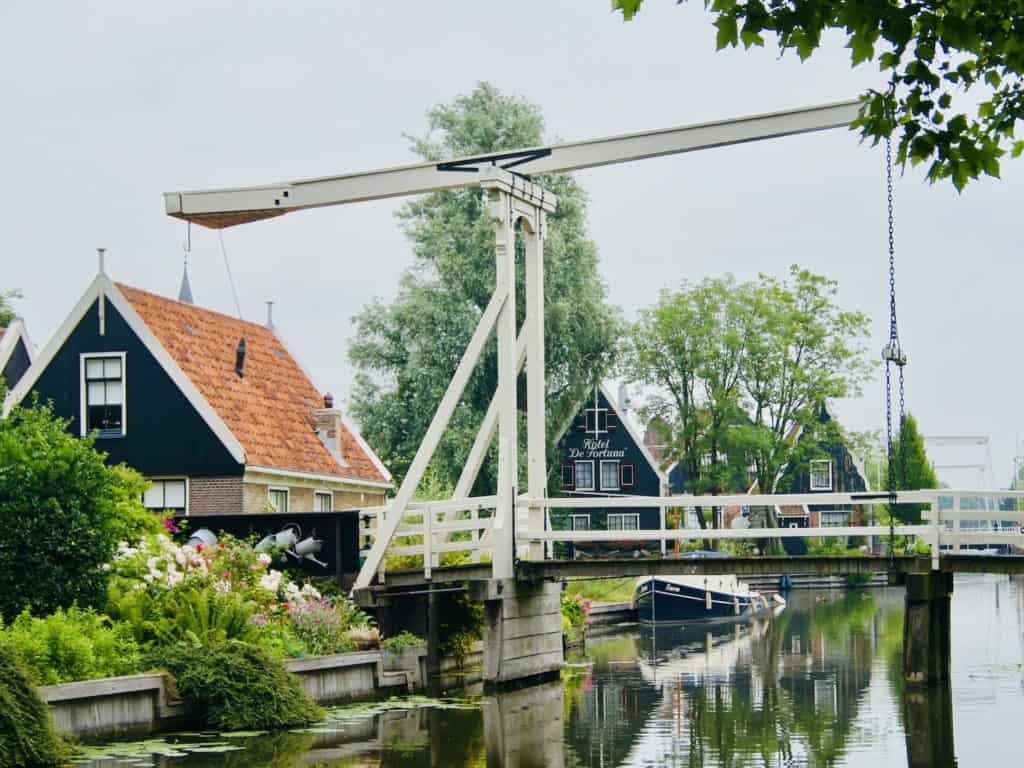
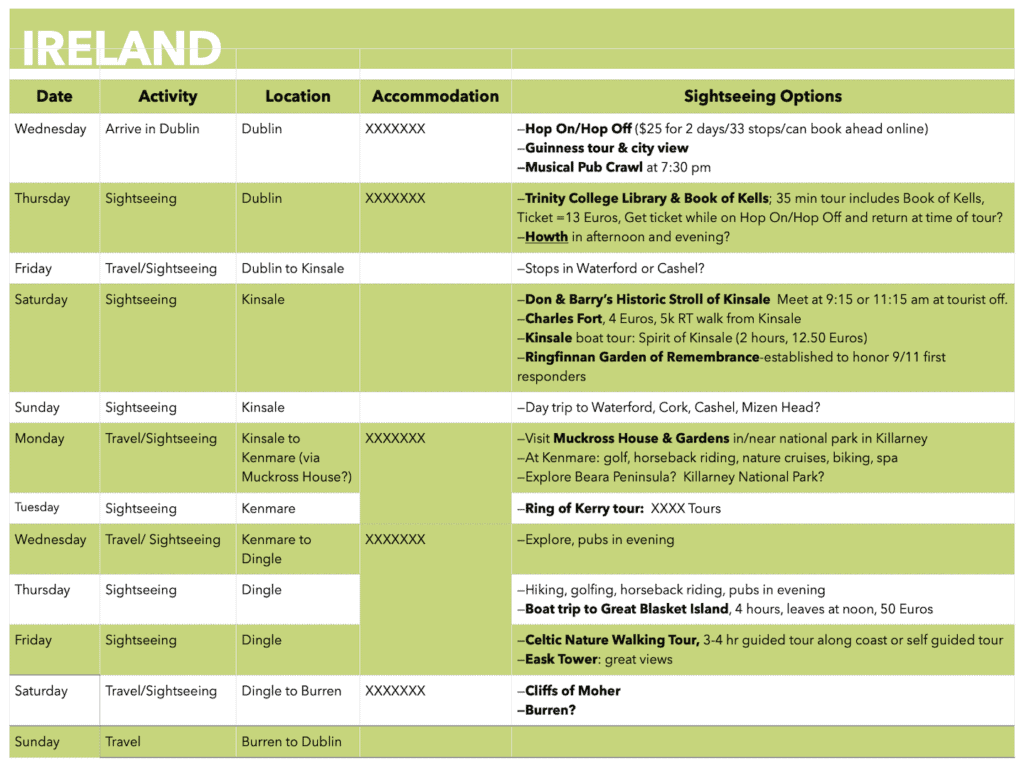
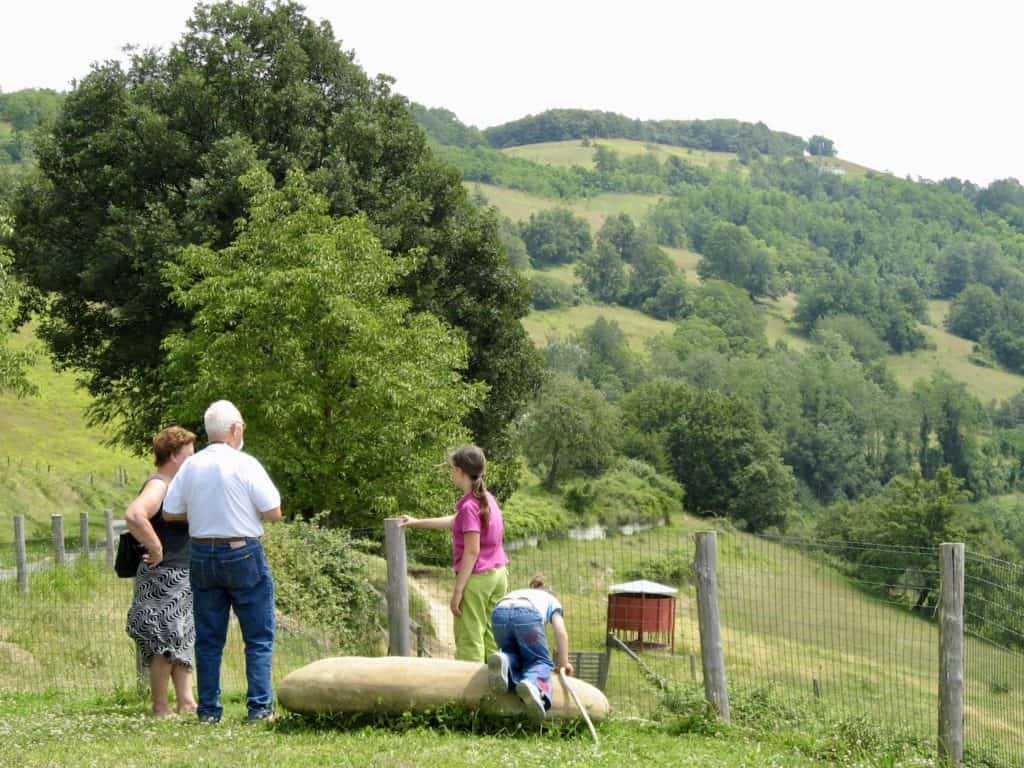
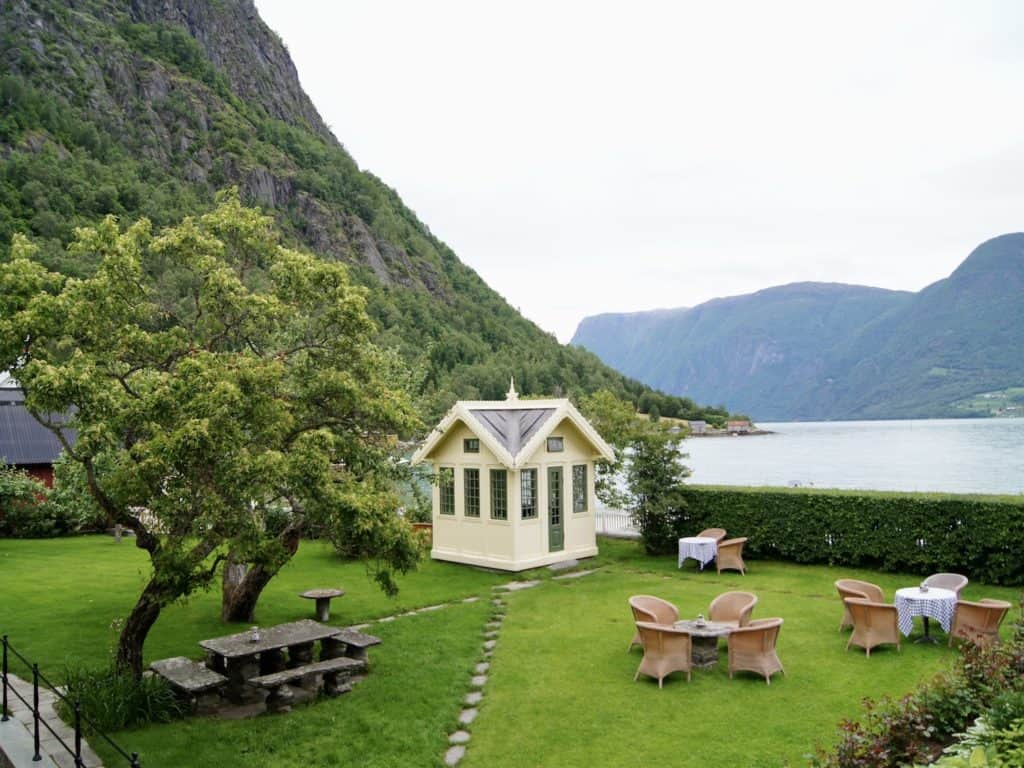
What a fantastic article. Well done. My wife and I and two friends will be boarding this Viking cruise in Amsterdam April 22nd this year. Your article provided us great insight into what we should expect from Viking and at all the ports of call. We have now completed our tour planning thanks to you.
A short story. We planned this adventure in 2019 for a spring 2020 sailing to celebrate our 50th anniversary and our friends 40th . That didn’t work out as planned due to Covid. So, we rebooked the same for 2021. That didn’t work out. So, we decided to skip a year and happy we did because of the regional politics. We only 6 weeks away from our sail date. Wish us luck.
Wow, your cruise is right around the corner, Glenn! How exciting! I’m glad you found the article helpful — and that your delayed adventure is so close. Good luck! Have fun!
Hello! I came upon your site while searching the internet for information on Viking River cruises. What a wonderful site! I just finished reading everything and it basically answered all of my questions. We are celebrating a 30th anniversary and this is our big trip for the year. Headed out for the Romantic Danube in early September and we’re very excited. Thank you for the information! Great job!!
Hi Phyllis, I’m so glad you found the article helpful. Happy 30th! Enjoy your fall cruise!
Hi Lolly, what time of year did you cruise? We are having a hard time figuring out what kind of clothes to bring.
Thanks, Debbie
Hi Debbie, my husband and I cruised in early summer. We like to visit Europe before schools get out there and families take their summer vacations. We were told years ago by some locals that places can get especially busy during July and August. Another optimal time in my view is September and early October. Enjoy your cruise!
Thank you so much for your review. We have been contemplating this cruise for a year or so and booked this past week for June 2020. Looking forward to it even more now.
Hi Ryan, I’m so glad you found the information helpful. I’m sure you’ll have a wonderful time on your cruise — only a few short months away. When you return, why don’t you post a few thoughts about your experience?! Have fun!